This is a Tessina L, a subminiature twin lens reflex camera created by Rudolph Steineck and built in Switzerland by Concava S.A. starting in 1957. The Tessina L is an upgraded version of the original Tessina camera with an uncoupled selenium light meter included. All Tessina cameras produce 14mm x 21mm images on standard double perforated 35mm film loaded in special Tessina cassettes, have a spring wind film advance, and have a large number of viewfinder and other accessories made for it. At the time the camera was made, preloaded cassettes could be purchased, or with bulk film, could be reloaded in a dark room. The Tessina is a twin lens reflex design that is built with an incredible amount of precision, consistent with the reputation of a Swiss watchmaker. These are some of the most compact and desirable 35mm cameras ever made.
Film Type: 135 (35mm) Loaded in Special Tessina Cassettes (twenty-four 14mm x 21mm images per cassette)
Lens (Taking and Viewing): 25mm f/2.8 Tessinon coated 4-elements
Focus: 1 foot to Infinity
Viewfinder: Waist Level Reflex Finder with Optional Clip on Eye Level Pentaprism and Magnified Viewfinders
Shutter: Behind the Lens Leaf
Speeds: B, 1/2 – 1/500 seconds
Exposure Meter: Uncoupled Selenium Cell
Battery: None
Flash Mount: None
Other Features: Spring Wind Film Advance
Weight: 208 grams
Manual: https://www.cameramanuals.org/pdf_files/tessina_auto_35.pdf
Tessina L Meter Manual: https://mikeeckman.com/wp-content/uploads/2022/06/TessinaMeterManual.jpg
How these ratings work |
The Tessina is a one of a kind camera, offering one of a kind features, in a one of a kind form factor. A true twin lens reflex, this incredibly small watch-like camera was made by a watch company and had an available wrist strap for easy portability. The camera is capable of surprisingly good images for it’s small size, but also has a number of quirks that take a lot of getting used to. From loading film into it’s special cassettes, to the tiny intricate controls, and dark reflex finder, the camera is not for everyone, but if you’re looking for something different, this is definitely it! | ||||||
| Images | Handling | Features | Viewfinder | Feel & Beauty | History | Age | |
| 2 | 2 | 1 | 0 | 2 | 2 | 30% | |
| Bonus | +1 for one of a kind operation, a camera unlike no other that was produced for nearly four decades | ||||||
| Final Score | 11.7 | ||||||
History
The Tessina subminiature twin lens reflex 35mm camera is many things. It is one of the smallest 35mm cameras ever made, it’s one of the smallest twin lens reflex cameras ever made, it’s one of the most unique looking cameras ever made, and it’s one of the longest produced cameras ever made. Most sources online cite 1957 as the date the camera first went into production and it was still available new as recently as 1996 and perhaps even beyond that.
Despite being such a historically significant and long produced camera, there is surprisingly little history about it. Search for “Tessina camera” online and you’ll find the same paragraph of information copy and pasted almost word for word, here, here, here, here, here, here, here, and here. I am sure there’s others too, but you get the point. Sadly, I don’t have a lot more to add to the backstory, but here is my best attempt at summarizing what is known without repeating too much of what other people have said.
Starting with what’s certain, the Tessina was made in Grenchen, Switzerland by the Swiss watchmaker Siegrist S.A. Many sources, including German and English language user manuals for the Tessina credit it to another Swiss company called Concava S.A. in Lugano, but this appears to be who distributed the camera, possibly only in Europe. In the United States, the camera was distributed by Karl Heitz in New York City.
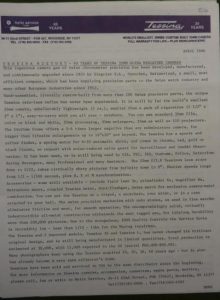 Most sources online suggest the camera started production in 1957, but according to the blurry historical document on the right published by Karl Heitz in April 1996, the camera was produced continuously since 1955. Contrary to that, a page for the Tessina on submin.com who has a ton of great info about the camera suggests the camera was produced since 1960. While I’m inclined to believe the official US distributor, the prevalence of the 1957 date seems to suggest that was when it first became widely available.
Most sources online suggest the camera started production in 1957, but according to the blurry historical document on the right published by Karl Heitz in April 1996, the camera was produced continuously since 1955. Contrary to that, a page for the Tessina on submin.com who has a ton of great info about the camera suggests the camera was produced since 1960. While I’m inclined to believe the official US distributor, the prevalence of the 1957 date seems to suggest that was when it first became widely available.
Credit for who designed the Tessina doesn’t seem to be certain either. Most sources state that an Austrian chemical engineer named Dr. Rudolph Steineck gets credit for that. This is backed up by a variety of US, German, and Swiss patents listing Steineck as the inventor of a wide range of 35mm and roll film cameras, wind up drive systems, and other technologies that may or may not have been used in the Tessina.
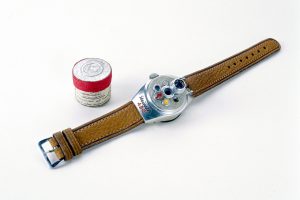
Steineck had previously designed the Steineck ABC Watch Camera, a camera designed to look like a wristwatch. The camera shoots eight circular images on a small disc of film, through a 12.5mm lens. It has both a tiny reflex and direct vision viewfinder. The camera is similar in dimensions of a watch face, there are no actual watch parts on it, or was there any attempt to disguise the camera as a watch, apart from being “watch like”. The Steineck watch camera was sold from 1948 to about 1951 and likely was the basis for developing a much more complex and capable subminiature camera.
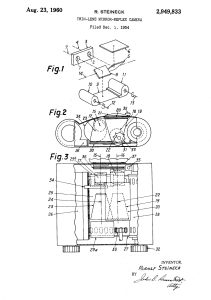
While I did find a number of German and English language patents credited to Steineck, many didn’t have images, and of the ones that did, most seemed to be for individual parts of a camera. The most conclusive patent I found for what would likely be the Tessina is US2,949,833 which was filed on December 1, 1954 in the US. It was previously filed in Switzerland on March 25, 1954, suggesting the first evidence of work being done on a new camera.
Looking at the illustration on the right, we see a general shape that resembles the Tessina with two knobs on the bottom, a 35mm film transport, two reflex mirrors (one for the viewfinder and one for the film plane) and both a taking and viewing lens.
This patent seems as if it would be the smoking gun, crediting Rudolph Steineck as the creator of the Tessina, a recurring statement found all over the Internet suggests that a man named Arnold Siegrist also deserves credit for creating the camera. The problem with this is that I could not find any patent or historical documentation to prove this. It seems logical to me that the patents are the smoking gun crediting the camera to Steineck and possibly some other people.
One last person credited as designing the Tessina is Paul Nagel, “the designer of the Kodak Retina and Pupile camera”. This claim appears to have been first made in an article from the March 1996 issue of Photographica World written by Jerry Friedman which has been repeated elsewhere online, most notably by Stephen Gandy’s Cameraquest site.
There are multiple things wrong with this statement, the first of which is that Paul Nagel did not design the Kodak Retina or Pupile camera, his older brother, Dr. August Nagel did. In addition, August Nagel died in October 1943, more than a decade before work would begin on the Tessina.
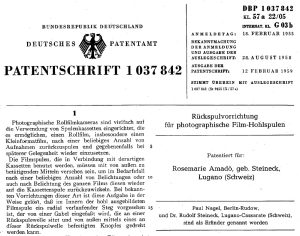
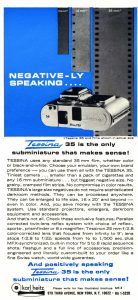
There is some evidence of German patents credited to both Rudolf Steineck and a Paul Nagel, all of the ones I could find, such as German Patent DE1041351B and DE1037842B, these both appear to be related to the motorized film transport of a camera. A third person is mentioned in these patents named Rosemarie Amadò as well, so if we’re giving credit to Paul Nagel, Rosemarie should be included too.
At best, I do believe that someone named Paul Nagel was involved in at least some part of the design of the Tessina, but not it’s overall construction. The Tessina is an extremely complex device whose design very likely required the expertise of multiple people. However, a story that the same person who designed the Kodak Retina also created the Tessina in his lab and then later sold the design to someone else who produced it, appears to be completely false.
With the history of the Tessina as clear as hazed up lens, the camera was built and sold for nearly 4 decades, with production lasting until the late 1990s. Although the cameras were exported all over the world, the only source for them in the US was Karl Heitz Inc in New York City.
In Jerry Friedman’s 1996 article mentioned earlier, he says Tessinas were still available new, but were custom built and had a back order delay of about a year to get. Beyond 1996 however, I cannot be certain how long the cameras were continued to be made.
With most low volume cameras, you don’t expect them to be in production long, but the Tessina’s history as a precision Swiss made product likely helped keep it going as it was made by a company used to low volume production. It’s unique size and function also meant that there was no other camera like it, which also helped keep demand up over the years.

When it was first released, the photographic press was rightfully excited. While many subminiature cameras had already existed, and the world was being inundated with half frame 35mm cameras coming out of Japan, no one had built a camera so small, yet with so many features, that could still use regular 35mm film. Some criticized the Tessina as it does not take full advantage of the entire width of 35mm film, which is true, that it uses easily developed film means that it required no special steps, tanks, or reels to get developed. After shooting a roll in a Tessina, your corner drug store could develop it (just don’t ask them to mount them into slides!)
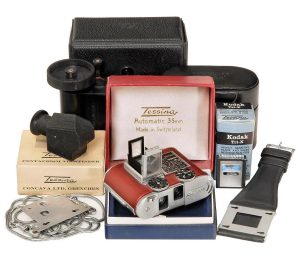
An introductory article previewing the Tessina for those who had yet to see one, appeared in the August 1963 issue of Popular Photography and lists a variety of prices for how the camera could be optioned:
- Base Chrome Tessina – $169
- Base Black, Gold, or Red(!) Tessina – $179
- Pentaprism Viewfinder – $39.90
- Exposure Meter – $19.95
- Case – $6.95
- Field Lens and Wrist Strap – $3.95 each
There were even a few other accessories sold that weren’t included in these original price lists such as a magnifier for the reflex finder, and a Tessina branded watch face that attaches to the wrist strap when you don’t have the camera mounted.
These prices when adjusted for inflation compare to about $1600 for a base chrome Tessina, all the way to a little over $2400 for a fully decked out version.
A second article which appeared in the April 1969 issue of Modern Photography for the slightly updated Tessina L is much more technical in nature, reviewing the camera’s operation and discussing the quality of the images it makes. It also shows that prices had dropped somewhat on the chrome model to $149.50 and $169.50 with the coupled meter.
Notable comments from the review state that images enlarged to 8×10 were still quite detailed, suggesting the 25mm Tessinon lenses were capable of outstanding definition. The build quality and compactness also impressed the author, although in his strip down report of the camera, Norman Goldberg rated it’s ability to withstand dust and dirt as poor because of the many crevices around the lens area and the rear knobs could allow dirt to get in. He concludes that keeping the Tessina clean is a necessity.
Finally, in his regular Camera Collector column published in January 1994, Jason Schneider looks back on the Tessina in what has to be one of the only instances where Jason talks about an old camera that is still in production.
Schneider confirms what other articles have stated, that as of 1994, the camera is still in production and has about a year’s wait to get one. He further says that cost of ownership is “just under a grand” and that for $1195, a version made with nylon gears which makes the camera quieter, is also available. Sadly, by 1994, most of the original accessories such as the pentaprism viewfinder, exposure meter, and wrist strap are no longer available, nor are the black, gold, or red versions.
A bulk of Schneider’s article covers basic operation of the camera, only barely commenting on it’s performance, as the typical reader likely had never heard of or seen one before. This makes this particular column in Jason Schneider’s series unique in that is sort of reads like a buyer’s guide as well.
Karl Heitz died on Janaury 26, 2005 and it appears that his company might have gone out of business at the same time as archived versions of karlheitz.com went offline around the same time. A current website for a company with the same name does not appear to be the same company.
Today, the Tessina is extremely collectible for pretty much every reason a camera could be collectible. It is rare, it is well built, it is unique, it is gorgeous, and it is fun to shoot. While examples of this camera frequently go for hundreds of dollars, with the less common accessories and original packaging elevating that price far higher, it is certainly not in the reach of most budget minded collectors.
If however, you are tired of the same old cameras, there simply isn’t anything else like it. Sure, there are plenty of other subminiature cameras, many of which are much smaller than this, but to have a fully functional twin lens reflex camera with a coupled exposure meter, that shoots regular 35mm film in a package this small? This is your only option…but what an option it is!
My Thoughts
As I survey the long list of camera’s I’ve reviewed on this site, I’ve started seeing some patterns. I seem to rotate between reflex, rangefinder, and point and shoot cameras with the occasional oddball or box camera thrown into the mix. I primarily shoot 35mm, with about a quarter of my reviews medium format, but there are whole subsets of cameras I haven’t touched. There isn’t a single large format or sheet film review on this site, and apart from a handful of exceptions, I’ve done very little in the subminiature segment.
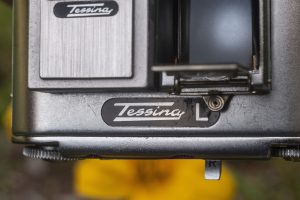
Recently, I’ve begun trying to make inroads into subminis, trying a variety of 16mm cameras and even a couple of those Japanese Hit style cameras that use 17.5mm paper backed roll film. But before I get in over my head, for my first true submini, I chose the Tessina…which shoots 35mm. Okay, okay, maybe that’s cheating, but I figure what good entry into this small and wonderful format than something that uses a film stock I have plenty of and won’t have any problems developing.
This all started with a trip to Bob Rotoloni’s house…you know the Nikon guy. For as much as Bob is seen as an authority on Nippon Kogaku and all things Nikon, he is not limited to just one brand. In fact, Bob has a pretty cool collection of Praktina SLRs and also has a fondness for Canon, having a variety of F-1s and some of their rangefinders.
But the one non-Nikon type of camera that he loves the most are subminis. Bob has a ton of them. He says one of his favorite things is that they’re so small, yet don’t take up a lot of room. In my last visit, Bob pulled out probably 25 different cameras, most of which I had never even heard of before, but the one that drew my attention the most was the Tessina. I had seen them before, but knew nothing about them, not even that they used 35mm. After seeing how much time I spent on the camera’s various controls, Bob offered to lend it to me to play with and I gladly accepted.
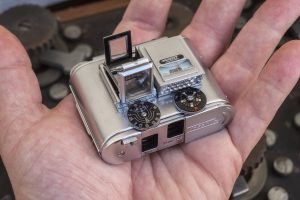
The Tessina is a wonder to hold. You don’t even have to know that it was made by a Swiss watchmaker to suggest it feels like a Swiss watch. The camera is small, but still big enough that you don’t feel as though the various buttons and knobs are difficult to use. At a weight of 208 grams with the viewfinder hood, meter, and an empty cassette, the camera isn’t exactly heavy, but it’s compact size gives a sense of density.
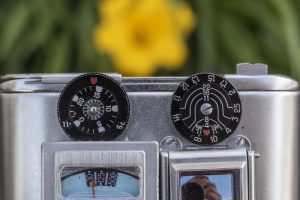
As you might expect, in order to fit all the needed controls for a fully mechanical camera onto such a small body, things get a bit cluttered. Up top, we have the combined exposure counter and aperture control dial, focus dial with built in depth of field scale, clip on coupled exposure meter and reflex viewfinder.
The exposure counter is additive, showing how many exposures had been made and must be manually reset after loading in each new roll of film. An original “retail” roll of Tessina film would have 24 exposures, which is the highest number the counter goes to. The focus wheel goes from 1 foot to infinity and shows an incredible amount of depth of field. Set the aperture to f/16 and when focused to 4 feet, everything from just over 2 feet to infinity will be in focus suggesting that precise focus is only necessary in very poor lighting or when taking close ups.
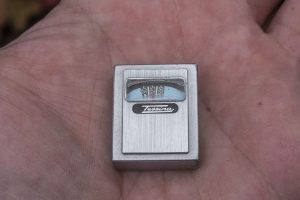
Using the Tessina L’s coupled meter is very easy. With the camera pointed at a light source, observe the location of the orange needle and whatever shutter speed it is pointing to, that’s what you must select on the camera for proper exposure. If the needle doesn’t point to a speed you can select, select another f/stop or find more light until it does.
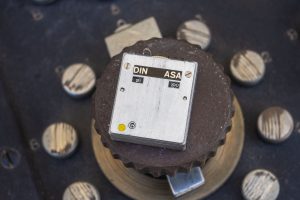
The clip on exposure meter slides off towards the back of the camera and reveals a small geared wheel along it’s front edge that couples with the aperture wheel. Removing the meter is necessary to set an appropriate film speed and also to calibrate the meter. With the meter off, set the film speed to whatever ASA or DIN speed film you are using, but then before sliding it back on the camera, be sure to set the aperture wheel to f/4 first. With the aperture correctly set, slide the meter back onto the shoe all the way, ensuring the meter’s gear meshes with the wheel on the camera.
Using the Tessina L’s coupled meter is very easy. With the camera pointed at a light source, observe the location of the orange needle and whatever shutter speed it is pointing to, that’s what you must select on the camera for proper exposure. If the needle doesn’t point to a speed you can select, select another f/stop or find more light until it does.
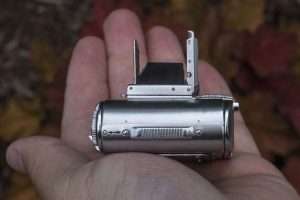
From the side the Tessina looks mostly the same, with the only difference being the film door latch on the camera’s right side. Slide the latch in the direction of the letter O to open the door and opposite to close it. Having only handled one Tessina, this latch was very stiff on this example. I am unsure if this is normal, but my instincts say it is, as you wouldn’t want this latch to accidentally come loose with film in the camera.
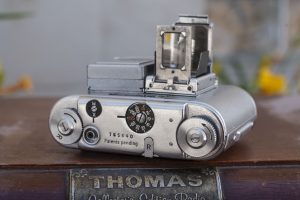
The back of the camera is equally crowded with controls that would normally be spaced out across a much larger camera. Starting on the left is the film rewind knob. Since the Tessina uses regular 35mm film, you still need to rewind it at the end of a roll. Next is an M/X flash sync dial with an ASA flash port beneath it. Next is the camera’s serial number and “Patents Pending” notification. Above that is the shutter speed dial. The dial is small, but ever so slightly sticks up above the top edge of the back plate, allowing you to easily change speeds by sliding your finger across it. Pay attention to the arrow on this dial as it only spins in one direction. Below the shutter speed dial is a rewind release which deactivates the film transport when lifted up. Finally, on the far right is the film transport wind knob. Inside of the tiny body of the Tessina is a wind up motorized film transport that when wound to it’s max is good for about 10 exposures with no film in the camera, or 8 with film in it. Simply pull out the knob and rotate it in the direction of the arrow until it can no longer turn for a full wind.
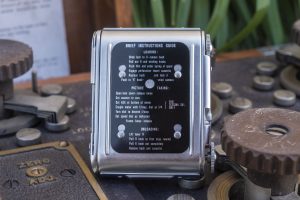
On the bottom is a handy quick reference guide that summarizes loading film, using the camera, and unloading the film. This reference guide is attached to the film door using four latches and is removable. These four latches can also be used for an optional wrist strap that allows you to wear the Tessina as a watch. You must first remove the instructions plate before attaching the camera to something else. To do this, you must press in on the chrome circle between the words “Picture” and “Taking” while sliding them down. It would be wise to store this plate in a safe location so it doesn’t get lost.
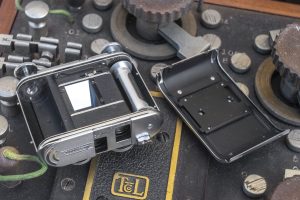
With the film door revealed, we see what is perhaps the smallest 35mm film compartment of any camera ever made. Although the Tessina uses standard double perforated 35mm film, it requires special cassettes. The camera is much too small to fit in a standard cassette, so therefore requires proprietary Tessina cassettes. As far as I know, all Tessina film cassettes were designed to be reloaded, so you could buy a few from your local Tessina dealer, and then reload them yourself using either bulk film or preloaded 35mm cassettes. To make it easier, you could buy a Tessina film loader, but I found it to be very simple to load the cassette I had without one.
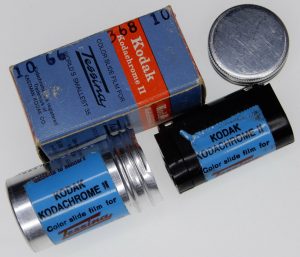
With both wind and rewind knobs facing up, film transports from left to right onto a fixed metal take up spool. The small film gate exposes film through the lens reflected off a front surface mirror, so take special caution not to get finger prints or any dust on the mirror. If any debris is present, use a soft lens brush to clean it. Do not use glass cleaner on the front surface mirror as it can damage it! On the inside of the film door is a small metal film pressure plate as you might expect to see in a regular 35mm camera.
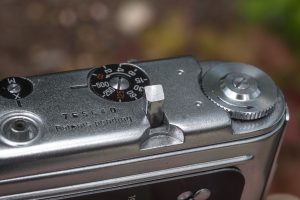
After completing a roll of film in the camera, as with other 35mm cameras, you need to rewind the film into the cassette, but before you can do that, you must deactivate the film transport. In order to do this, lift up on this small lever on the back of the camera beneath the shutter speed dial, and you can now use the rewind knob on the left side of the back to rewind your film back into it’s cassette.
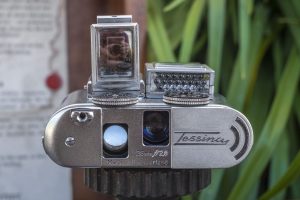
Looking at the front of the camera, the viewfinder lens is directly below the viewfinder, and the taking lens above and to the right of it. The Tessina is a true twin lens reflex, in which separate lenses are used for composition and exposure. Unlike most TLRs however, the distance between the two lenses is so small, there’s hardly any chance for parallax error.
To the left of the viewfinder lens is the cable threaded shutter release button. This location is in comfortable reach of the photographer’s right index finger while holding the camera, both at eye or waist level. On the opposite of the front is a sliding Tessina door. This door serves double purpose, both to protect the taking lens from debris, but also as a shutter lock. With the door closed, even part way, the shutter release is locked, preventing accidental exposure while the camera is stored.
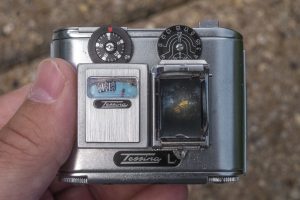
Perhaps the most amazing thing about the Tessina to someone whose never seen one before, is that it is a true TLR, with a waist level finder, allowing you to accurately see focus. The extreme depth of field afforded by the 25mm Tessinon lens means that beyond a couple of feet, precise focus through the reflex viewfinder isn’t very necessary. Instead, the viewfinder hood has front and rear windows which can be used as a sports finder, which is how most people likely would use the camera when shooting things far away. Regardless of whether you use the sports or waist level finder, the Tessina works just like a full size TLR, just a lot smaller!
The next two images show the same scene looking through the reflex and the sports finder. Like a TLR, the reflex finder image is reversed, so moving the camera to the left, moves the image to the right and vice versa. Due to it’s small size however, the image is also very dark with extreme vignetting near the corners. Even in bright sunlight, only the center of the image is bright enough to be useful, and it is downright impossible to see the corners indoors or in low light.
By far, the optical sports finder is the better option for most shots, it even has a bright line finder for accurate framing of your shot. As I mentioned earlier, the Tessina has enough depth of field that getting precise focus isn’t even all that necessary, but in the instances where I wanted to get close, I used the reflex finder similar to how I would the rangefinder on a Leica in which I could only see the center of my image. I would pick something in my shot I wanted to focus in on, look through the reflex finder to see if it looked sharp, and once it was, move my eye to the sports finder to compose my shot.
The Tessina is a wonderfully designed camera, that despite it’s incredibly small size, and strange control layout, is not difficult to use. This is a camera you’ll definitely want to familiarize yourself with before taking it out, but the learning curve is very short. After reading through the manual one time and test firing it a couple of times, I felt I was ready to take it out shooting.
As is the case of any camera I’ve never used, the devil is in the details, so how did it go with my first ever rolls through a subminiature 35mm camera?
My Results
For my first roll through the Tessina, I chose some bulk Rollei RPX25 I had. My thought in using this camera is that it had a ton of contrast, which should help make the small images pop, but also that the Rollei film has a very thin base, meaning I should have an easier time tightly loading the film into the tiny cassette. Thin base films like RPX 25 resist curl so I thought it would make loading, and later developing, easier. After finishing that roll, I wanted to try some color, so I loaded in some expired Kodak Gold 100 I had. I do not have any bulk color 35mm film, and was running low on good color stocks, and since I would have to cut out film from a cassette, I chose something I still have a lot of.
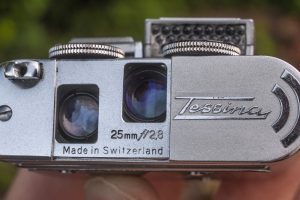
Considering the challenges today of shooting a Tessina in unknown working condition, owned by a collector who will likely never shoot it, I’d have to say that getting any images from the camera was a success. With the proper cassette, the camera advanced the film and fired the shutter as expected.
Between the two rolls, the black and white Rollei film definitely shined whereas the expired Kodak Gold was a bit of a mess. It is clear that any film that’s going to show a lot of grain will not look too good at the small image sizes the Tessina makes. In hindsight, fresh color film would have been a better choice, but I didn’t have any at the time I was testing this camera.
That said, I can still declare the camera’s 4-element Tessinon a winner. At a size of 14mm x 21mm, the total exposed area is 294 sq mm, or roughly 1/3rd the size of a full frame 35mm image. Considering the loss of detail seen in many half-frame 35mm cameras, the Tessina’s images are even smaller. Although I would likely never print any of the images I’ve shot here, I agree with the original reviews of the camera saying that images shot on a fine grain film could easily be enlarged to 8×10 without significant loss of detail. That you can get prints of comparable detail to full frame 35mm cameras in such a small package is a tremendous achievement.
But of course, any time you shrink something down, compromises have to be made, and the Tessina is no exception. I did not have the fortune to test the camera with one of it’s original straps or the wristwatch accessory. Holding the camera without any way to secure it is terrifying, especially when it’s being loaned to you by someone else.

The Tessina is covered in high quality glossy chrome plating that is very smooth, but almost too smooth. Although thankfully, it never happened, it would not be a stretch to think that the camera could easily slip through careless fingers or fall out of too large of a pocket. I think that having some way to secure the camera to your body is essential so if you plan on getting one of these to shoot, make sure you get the right accessories.
In addition, the controls for the focus and the aperture are very tiny and difficult to change. The difference in f/stops on the aperture control between the smaller f/stops is extremely small. In fact, most of the time, you can see two f/stops in different windows at the same time, requiring a very precise turn of the wheel to get it right.
The waist level reflex finder, although very cool, is almost useless. Extreme vignetting makes seeing focus extremely difficult even in bright sunlight, and with such a small piece of glass, even when you have ideal light, the difference between a properly focused flower at 3 feet isn’t much different from 2 or 4 feet. Assuming you’re not attempting close-ups, by far, the best way to shoot the camera is using the fold up optical viewfinder, which is very bright and easy to use. The 25mm Tessinon has tremendous depth of field, especially stopped down, so for me, that was the better way to shoot it.

The sliding door on the front of the camera was problematic for me as well. It is designed to prevent accidental exposure when closed, however I found that while shooting, it was very easy to bump the door causing it to move the slightest bit and lock the shutter release. I cannot count the number of times I would be ready to make my shot, only to find that the door was closed by 1mm, requiring me to open it, then recompose my shot again. This definitely was not a camera for fast action for me.
With the camera wound up, and everything set, assuming you don’t have to keep making adjustments for exposure or focus distance, shooting the Tessina is quite fun. The location of the front shutter release is logical and comfortable to locate with your right index finger, and the mechanical buzzing noise of the motor drive doing it’s thing is very cool to hear. Having a wind up motor drive was a smart move for this camera as you can easily take eight exposures on a single wind. I’ve read that the original number was 12, but perhaps the spring had weakened on this example, but even with “only” eight that’s enough to shoot a sequence of exposures without having to remove your finger from the shutter release.
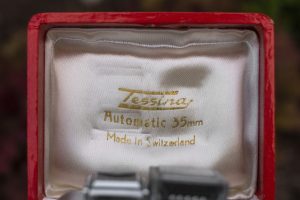
The strength of the Tessina by far, is it’s compact size. This camera was in production for nearly four decades and there’s a good reason for that, which is that it both works like and can do things that no other camera could. There were very few true twin lens reflex cameras that used 35mm film, and although it requires film to be loaded in special cassettes, that the film could be easily developed by any photofinisher that could do regular 35mm is a tremendous advantage over other proprietary subminiature designs.
Tessinas, as you imagine are not easy to find, and when you do, they can fetch quite a high price. As with anything, the price skyrockets based on condition and the number of accessories that it comes with. A nice working Tessina with it’s full suite of accessories can easily fetch several thousands of dollars, but unlike other highly desirable film cameras, owners of one of these can truly say they have something no one else does. I am very glad to have had the chance to shoot this camera, but I won’t miss it when I send it back to it’s owner as it’s just not something I would use very often, but perhaps your preferences are different from mine. Either way, this is a very cool camera that’s absolutely worth checking out, if you ever have an opportunity to do so.
Related Posts You Might Enjoy
External Links
https://en.wikipedia.org/wiki/Tessina
http://camera-wiki.org/wiki/Tessina
https://www.pacificrimcamera.com/pp/tessina.htm
https://www.pacificrimcamera.com/rl/rlConcavaTessina.htm
http://www.submin.com/35mm/collection/tessina/introduction.htm
https://www.cryptomuseum.com/covert/camera/tessina/index.htm
http://www.collection-appareils.fr/x/html/page_standard.php?id_appareil=11731
https://www.photrio.com/forum/threads/tessina-l-instructions.140124/
https://web.archive.org/web/20070209200252/http://johnandlisa.us/john/tessina-notes.html (Archived)

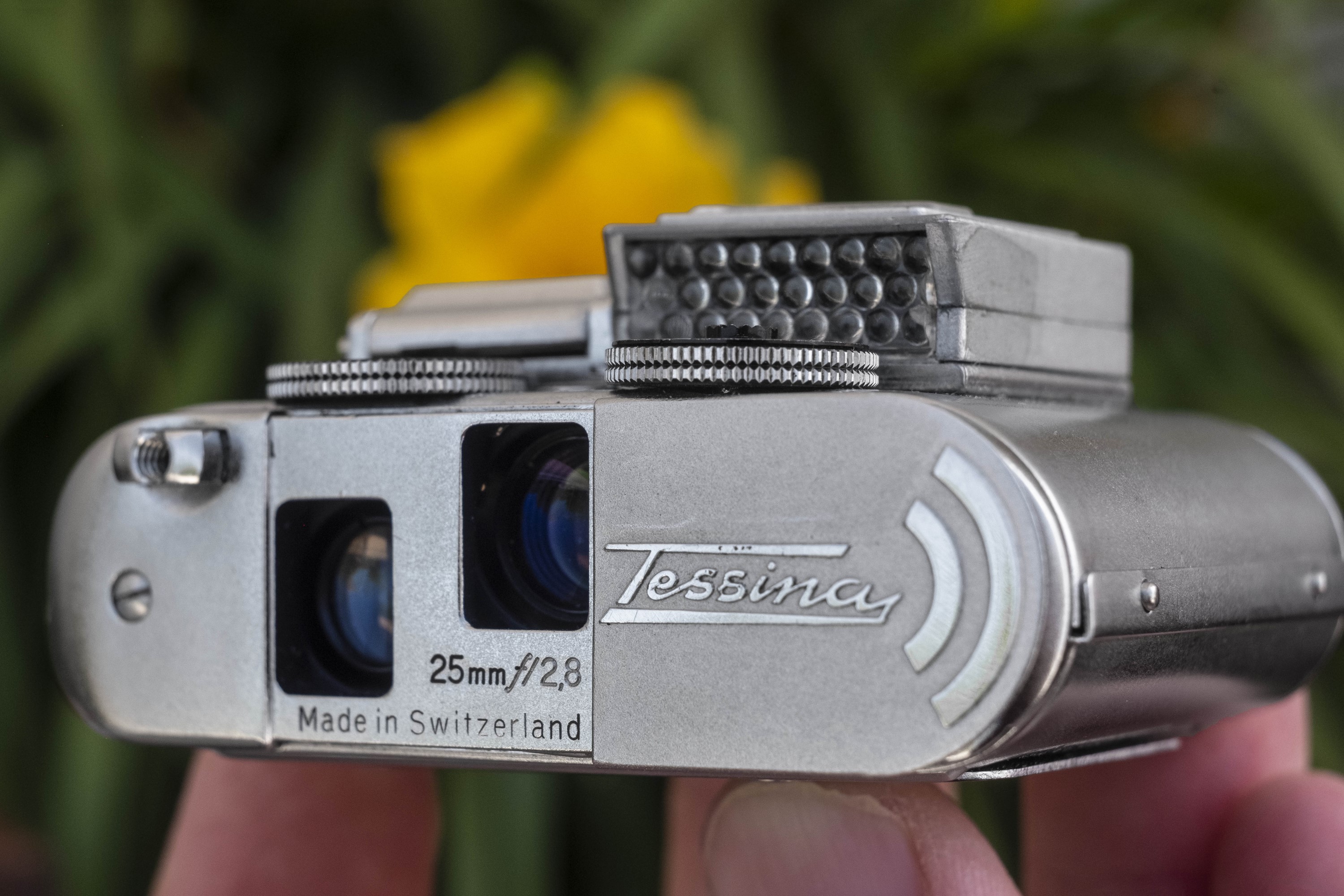
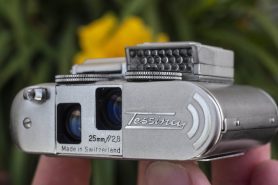
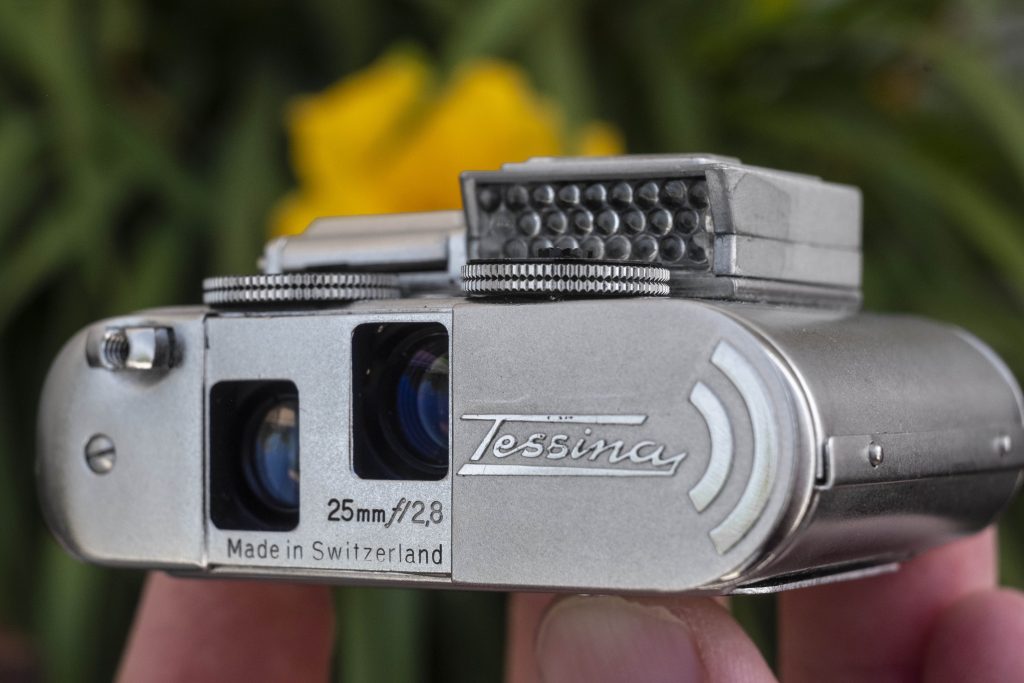
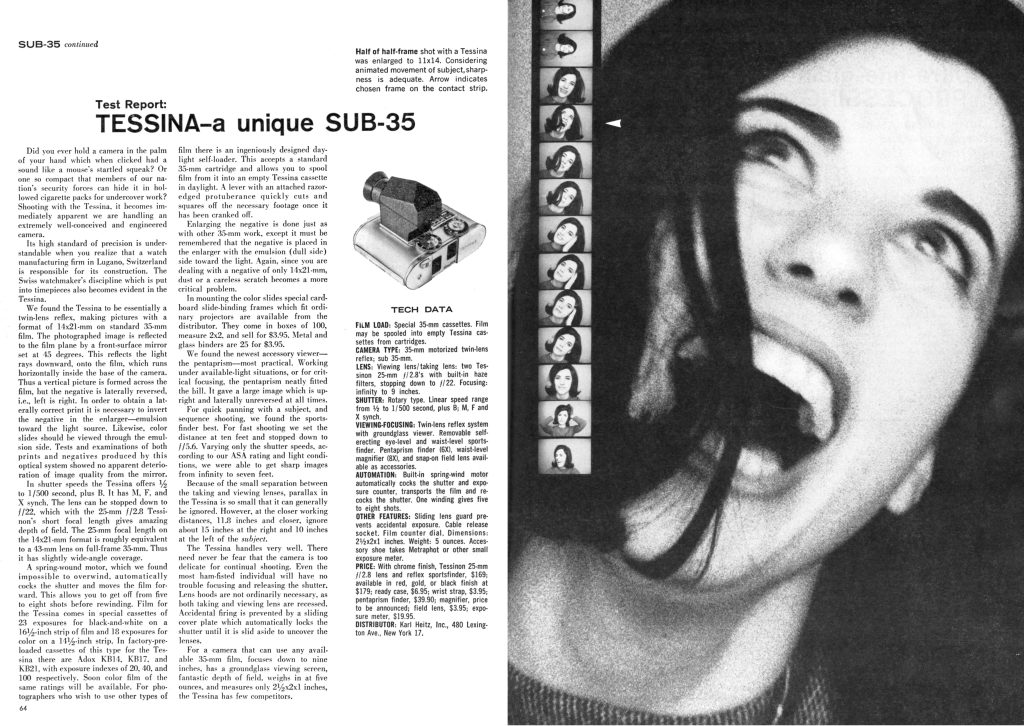
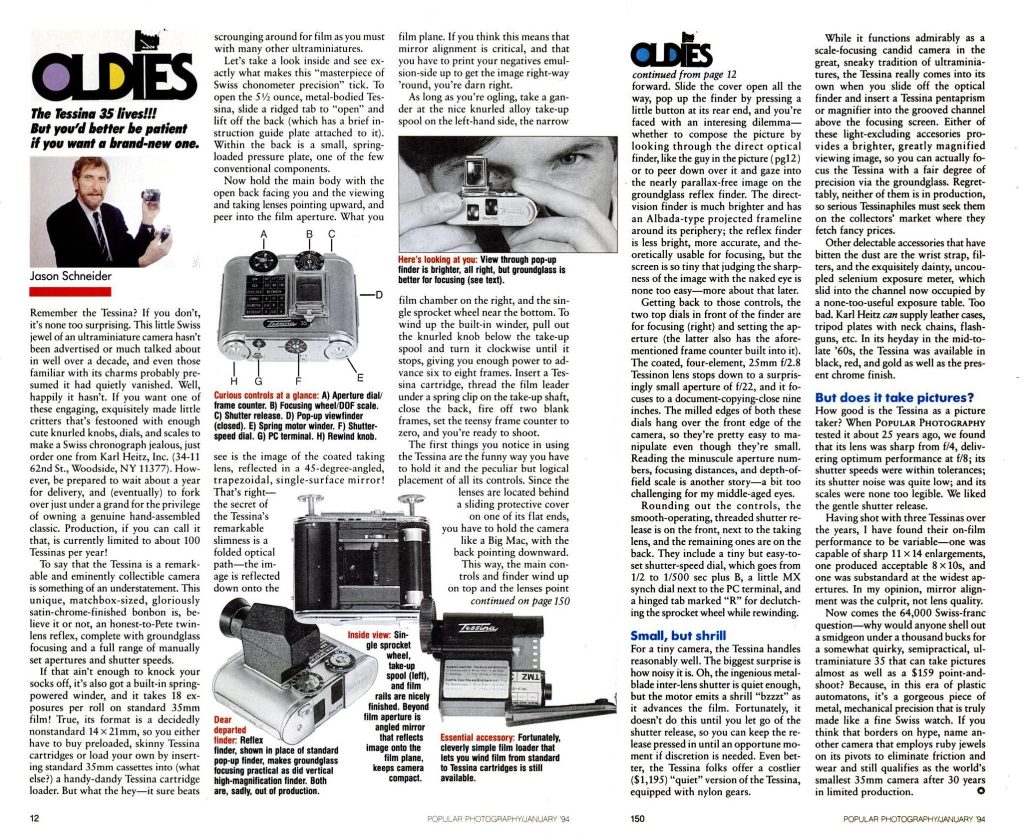
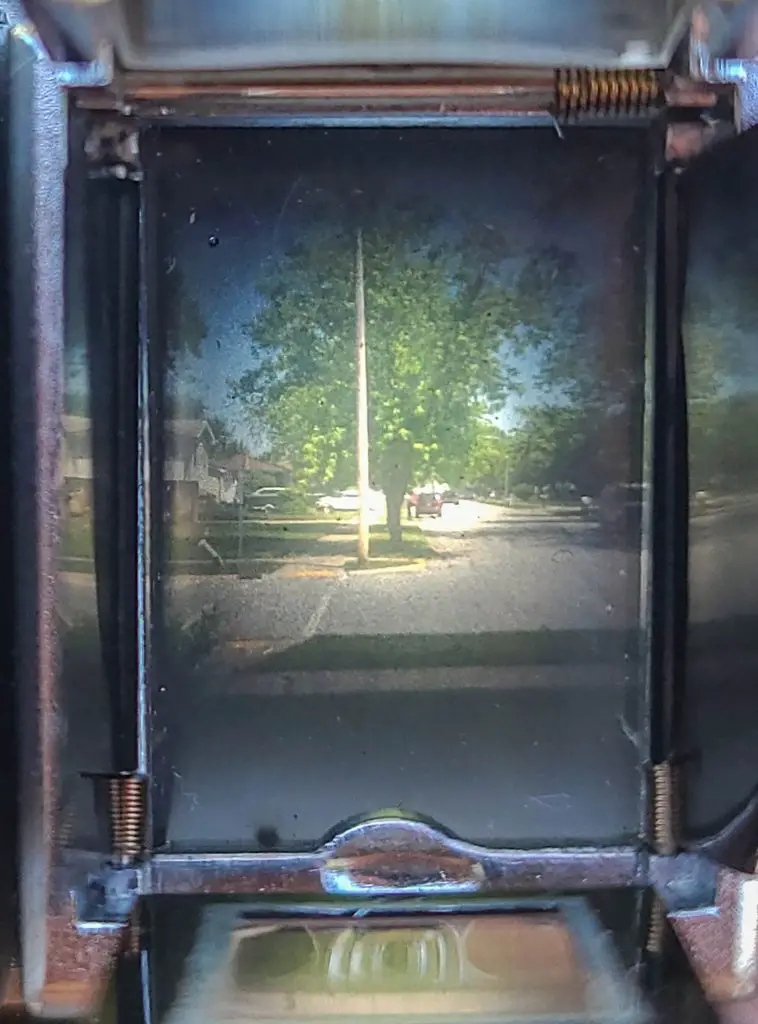
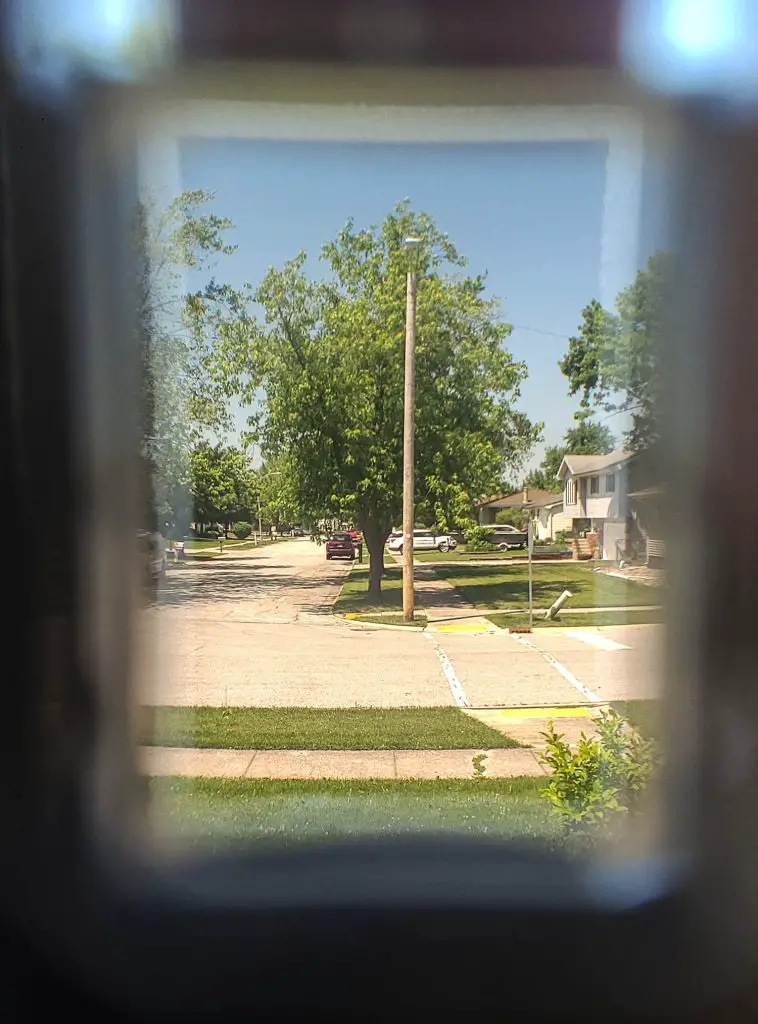

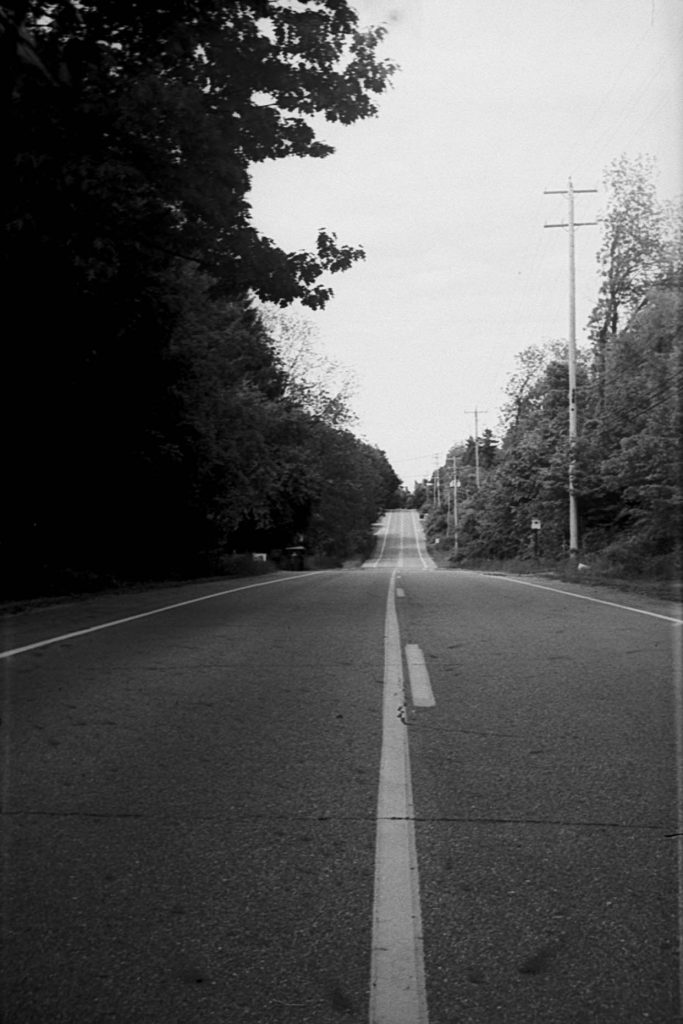
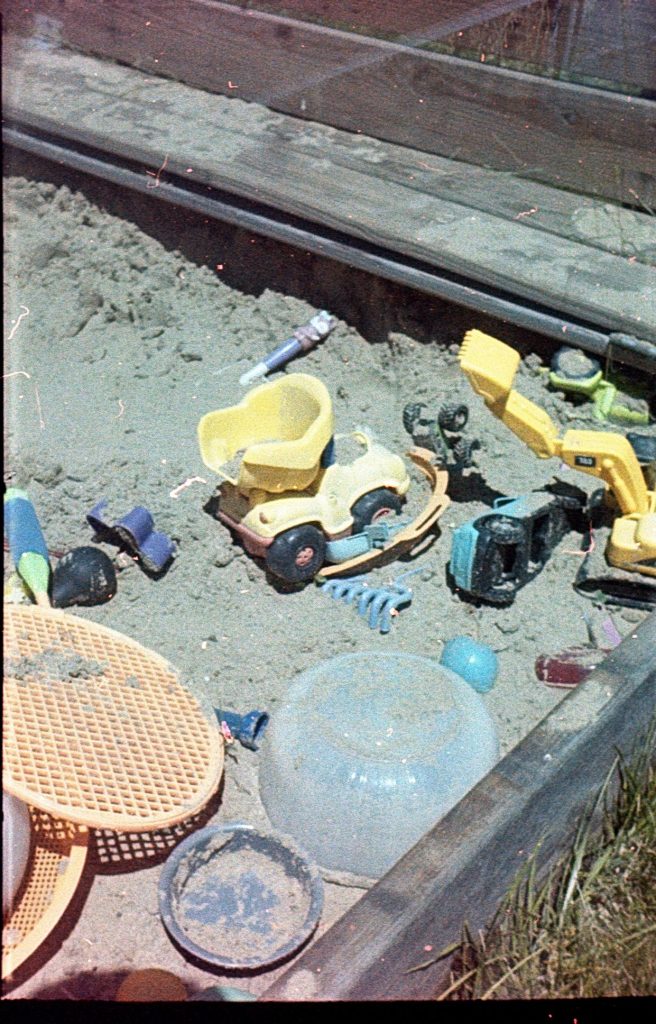
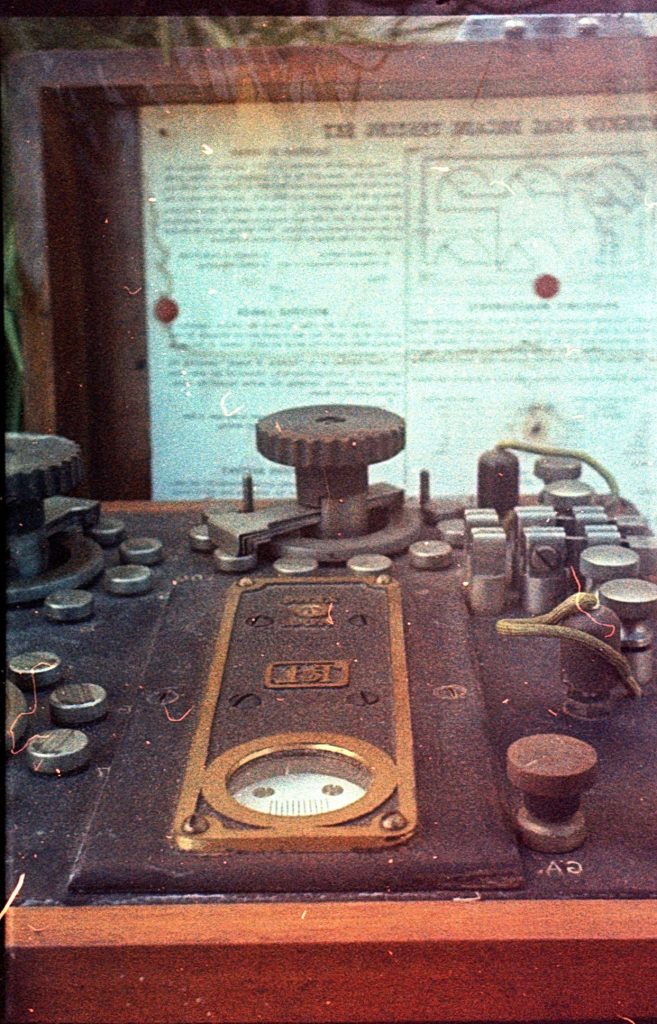
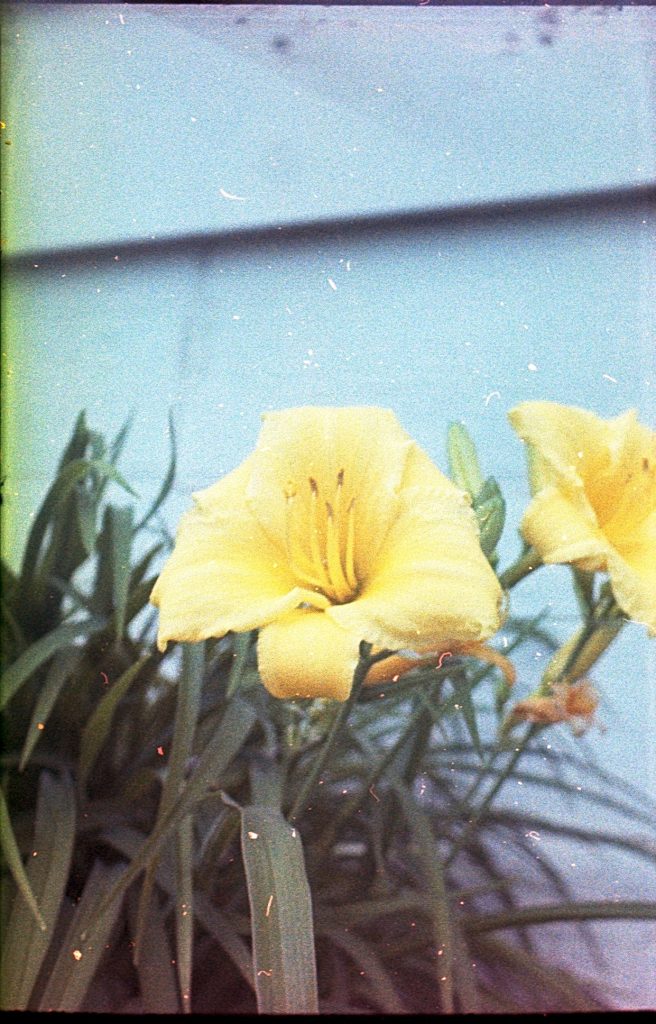
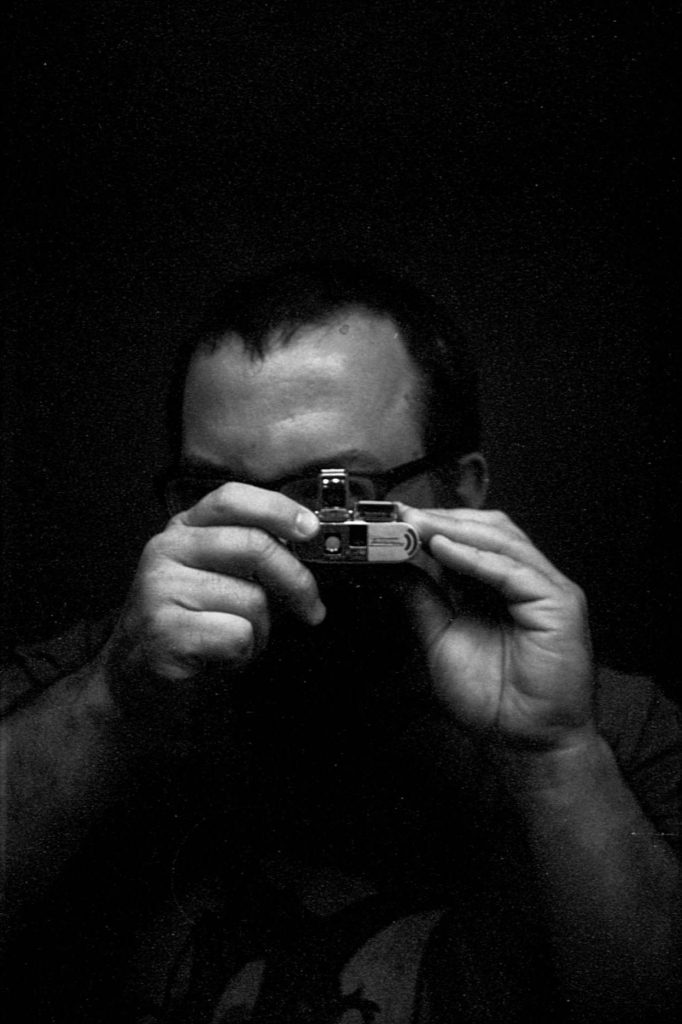
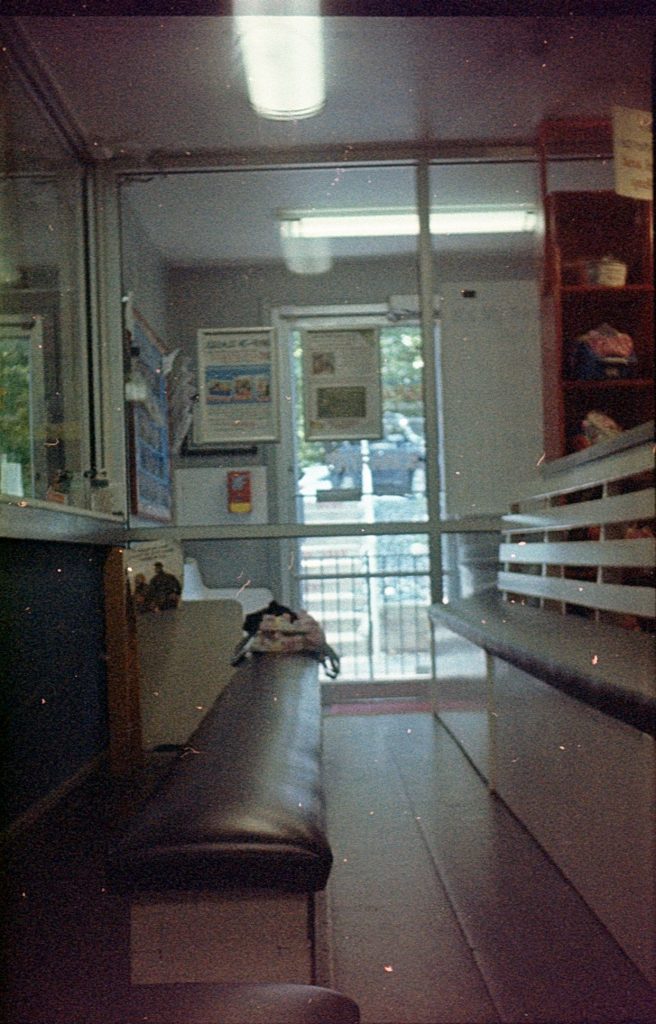
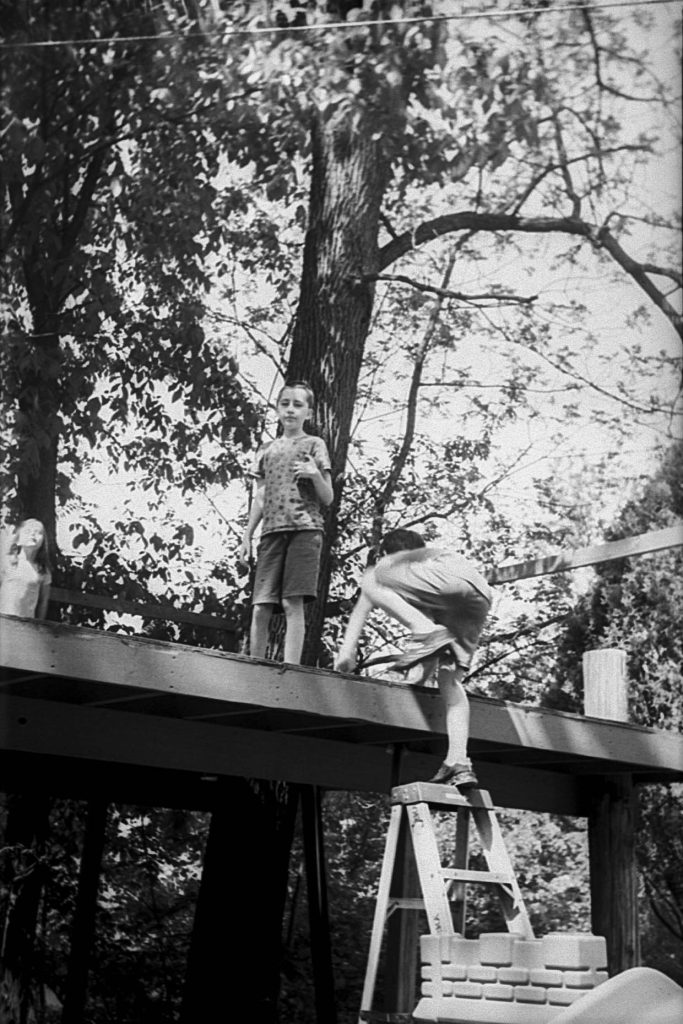
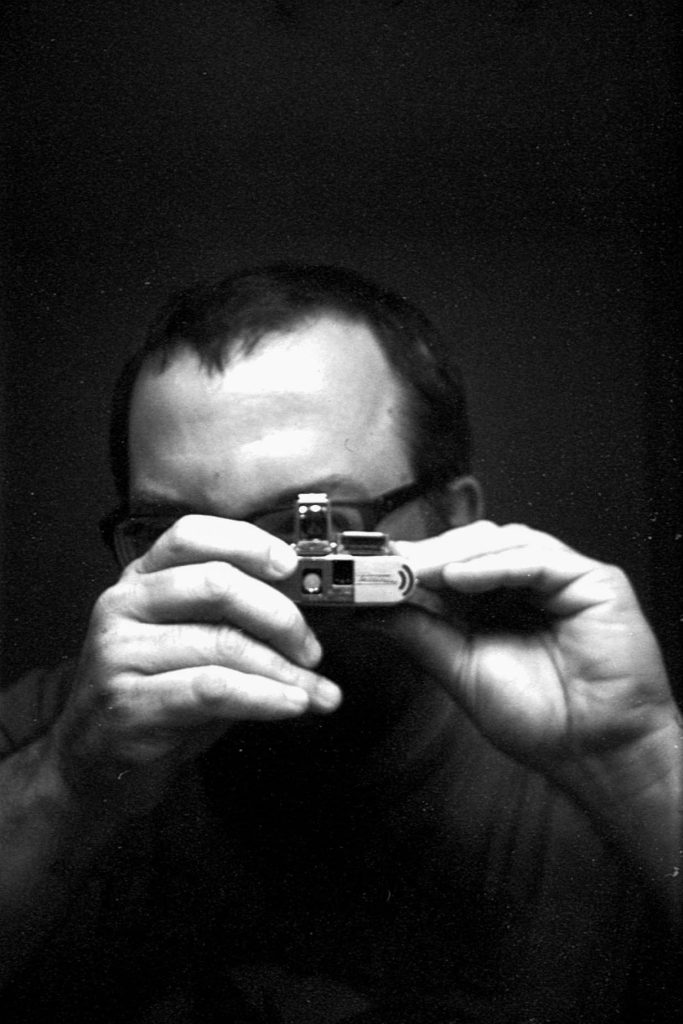
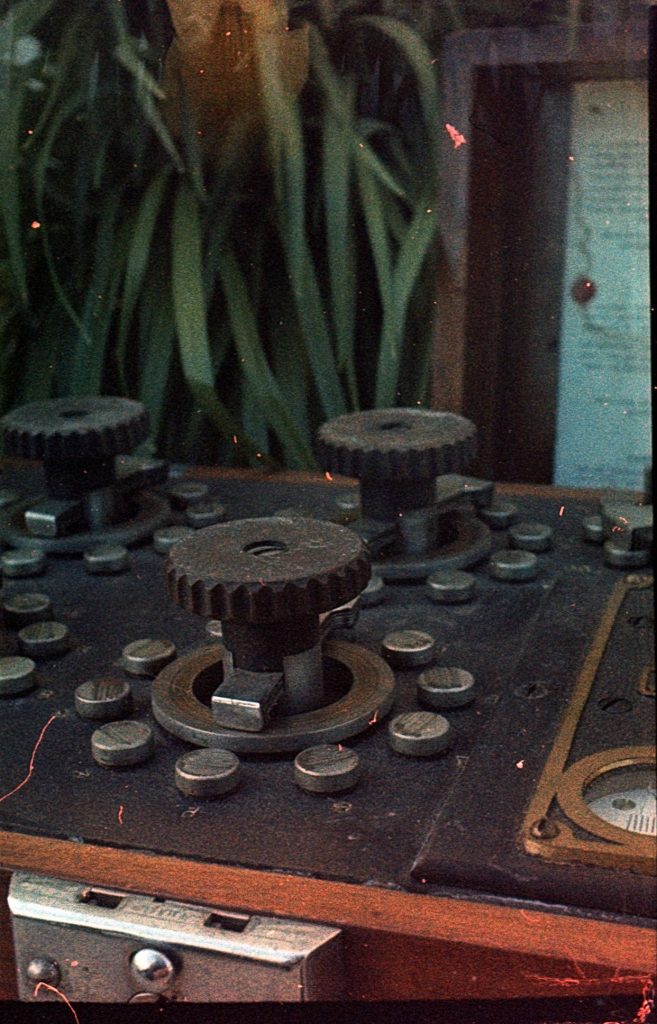
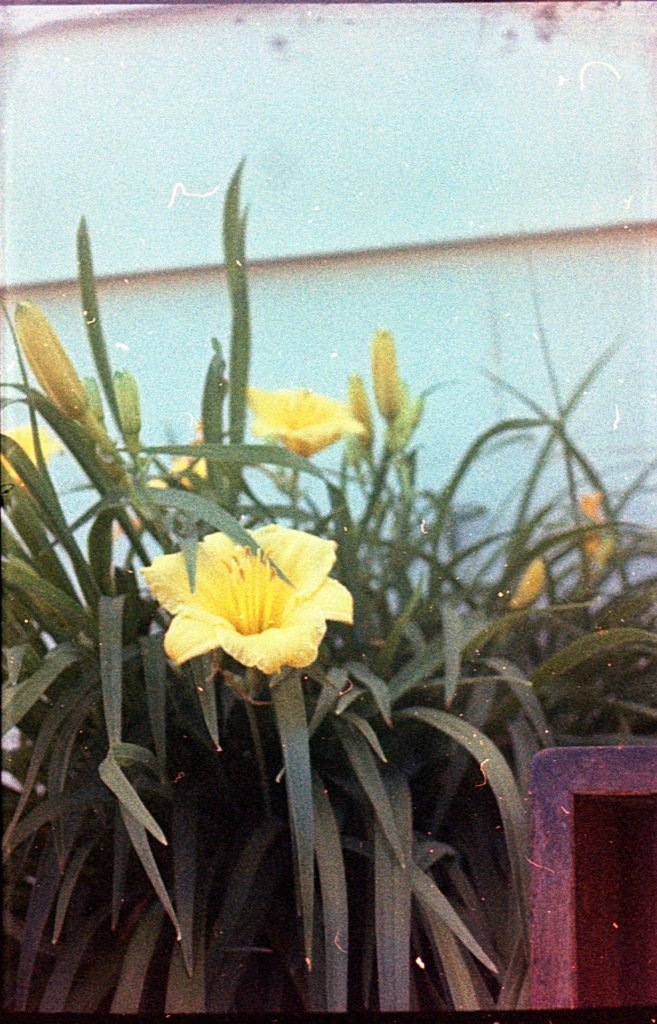
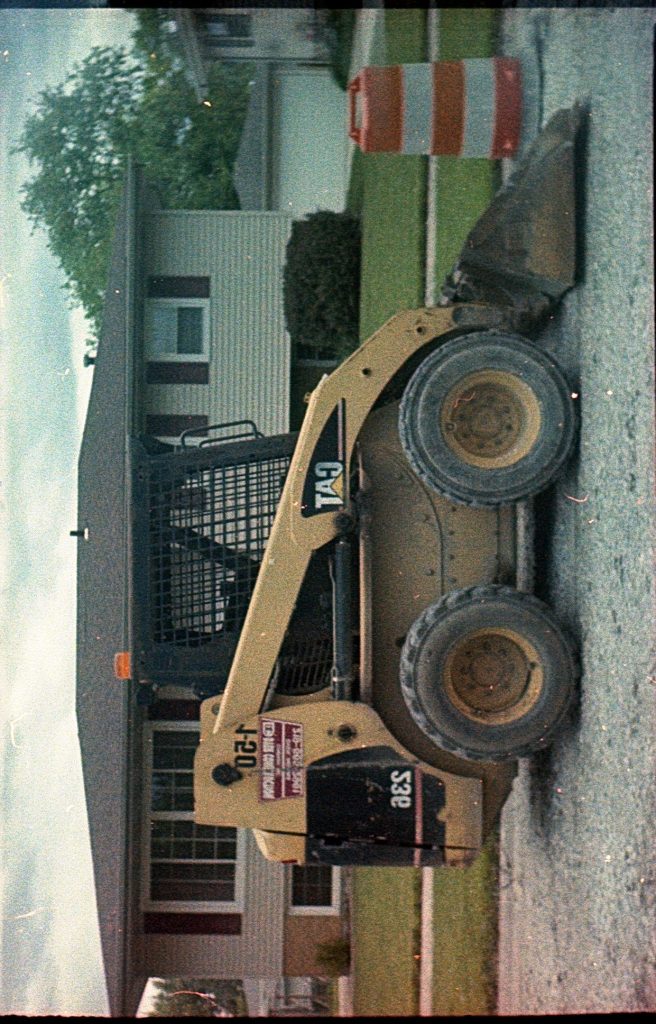
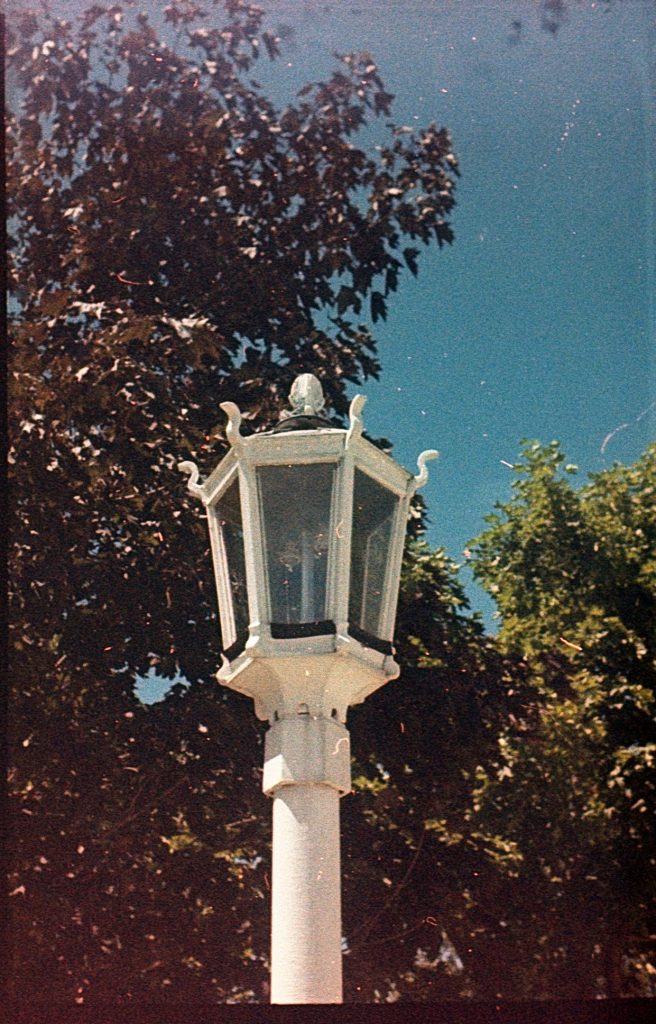
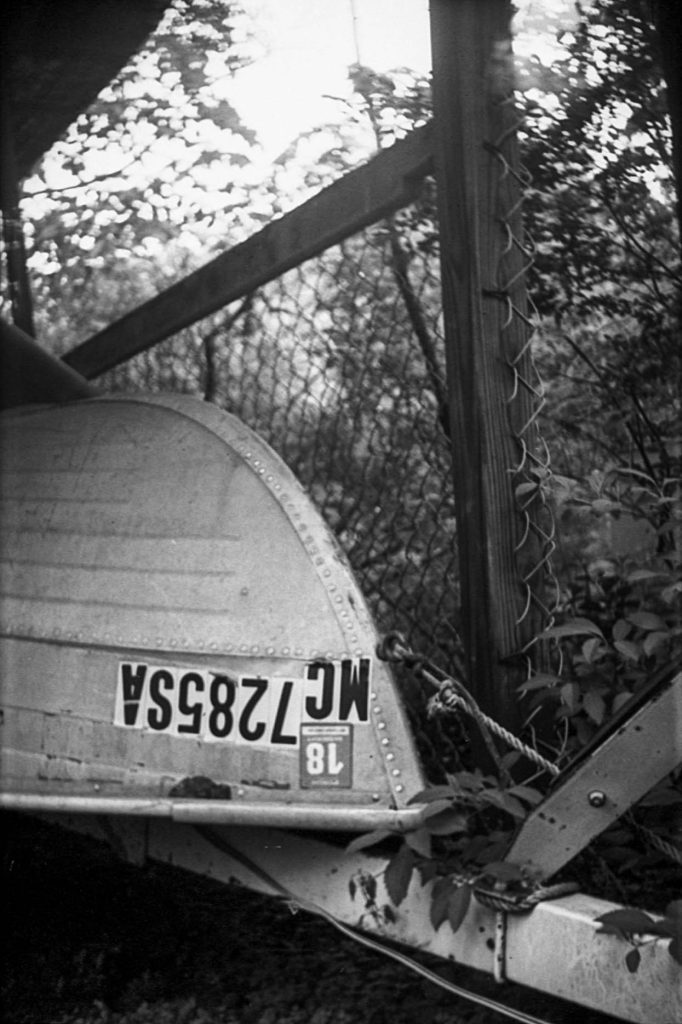
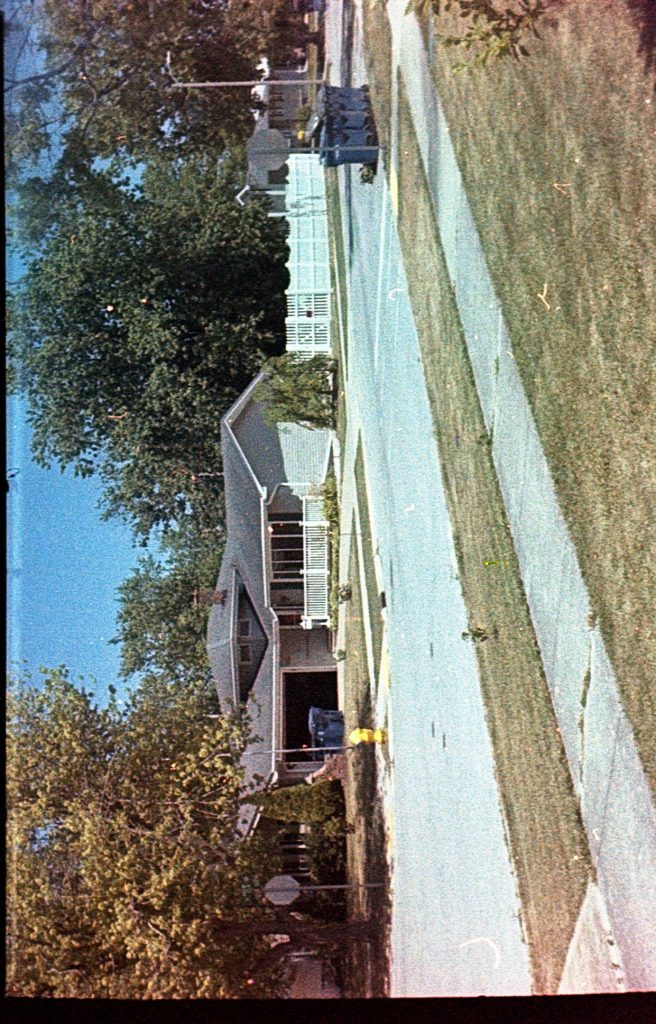
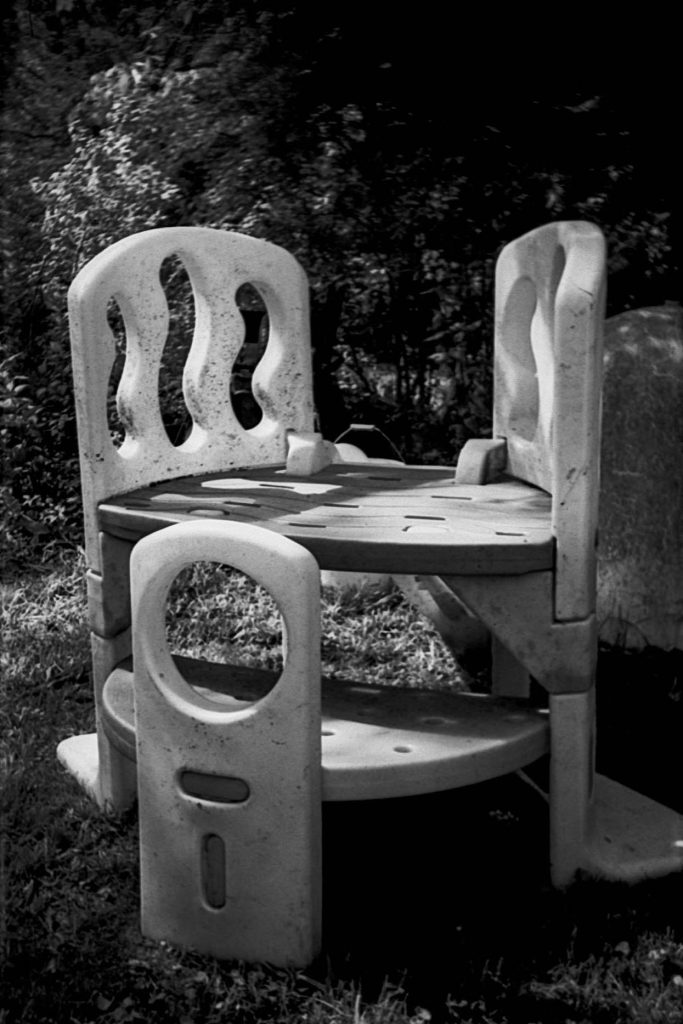
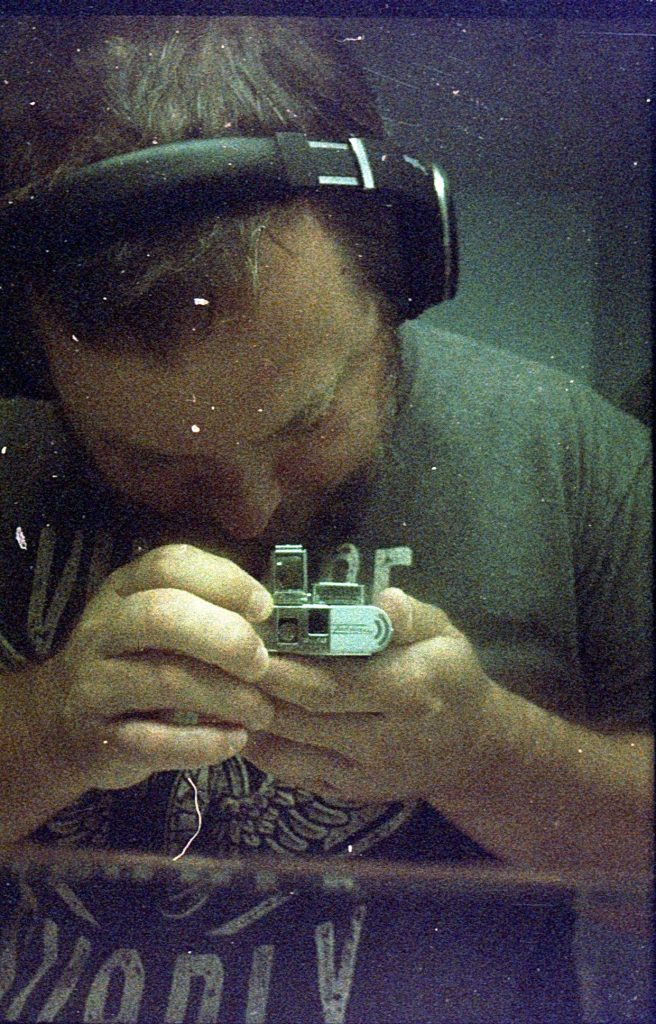
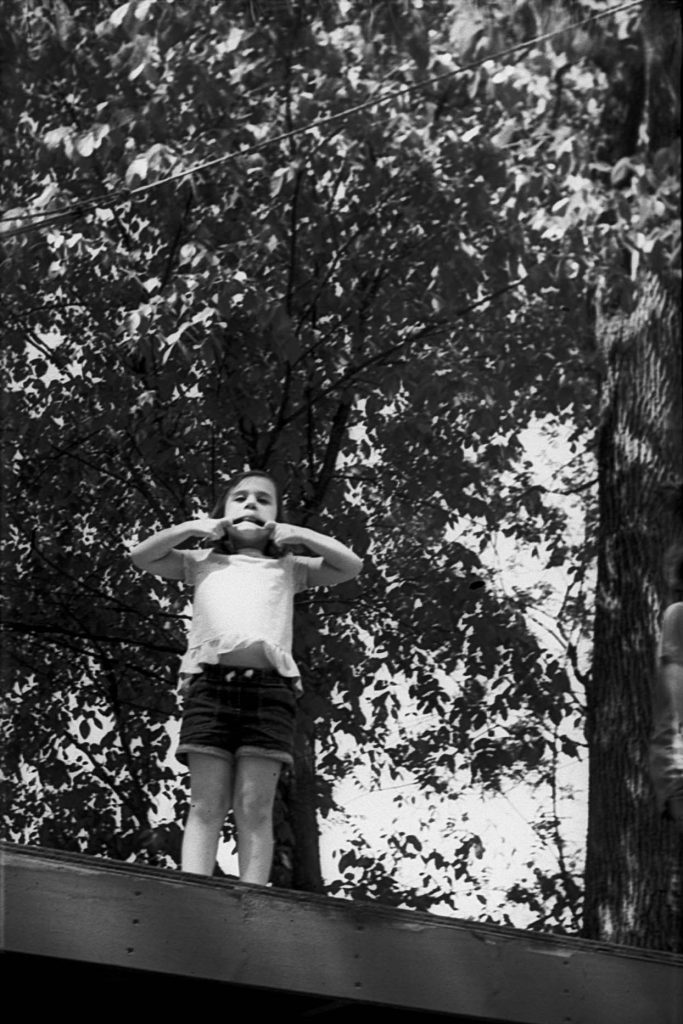
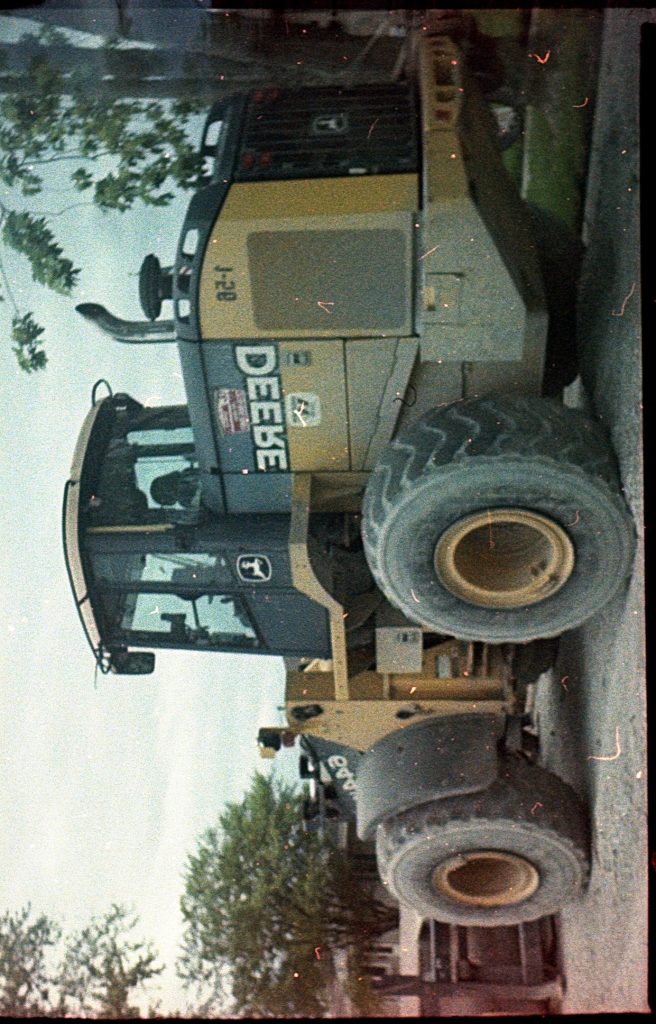
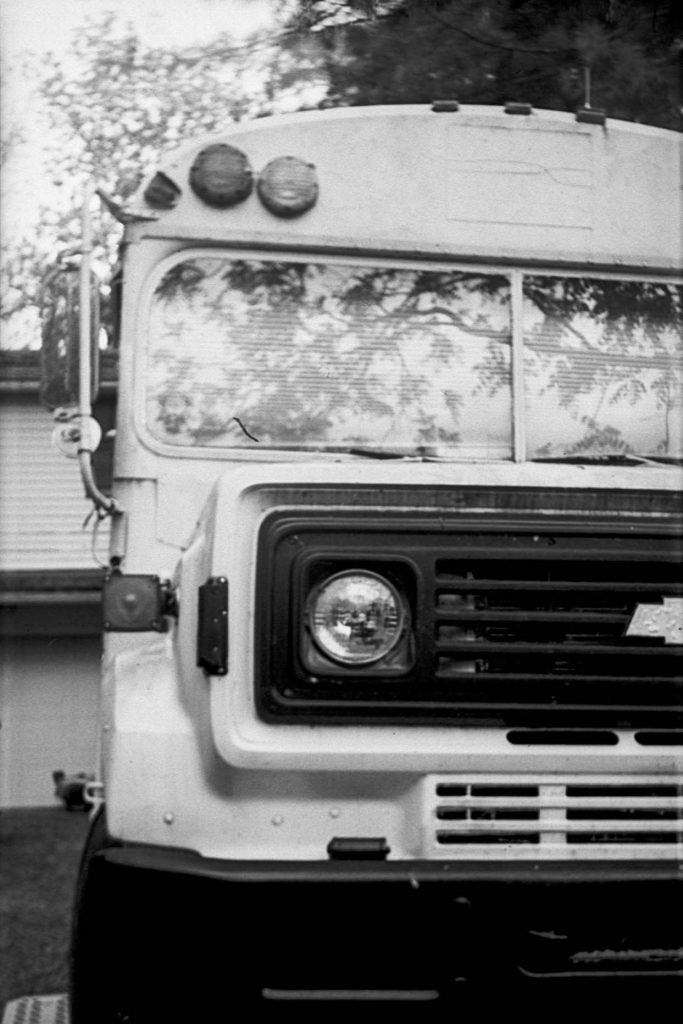
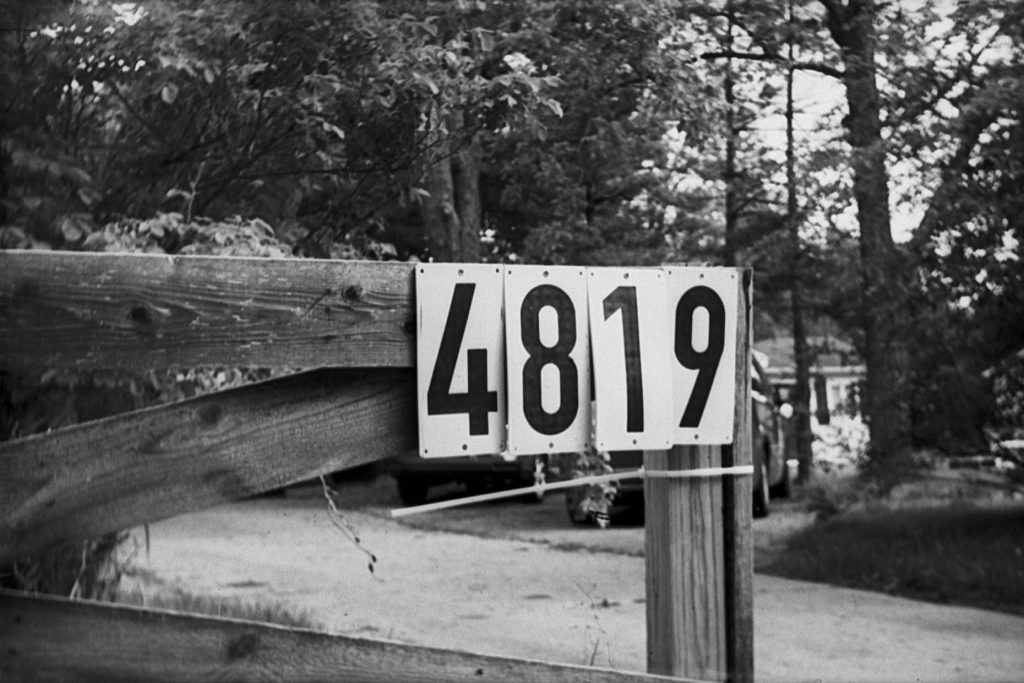

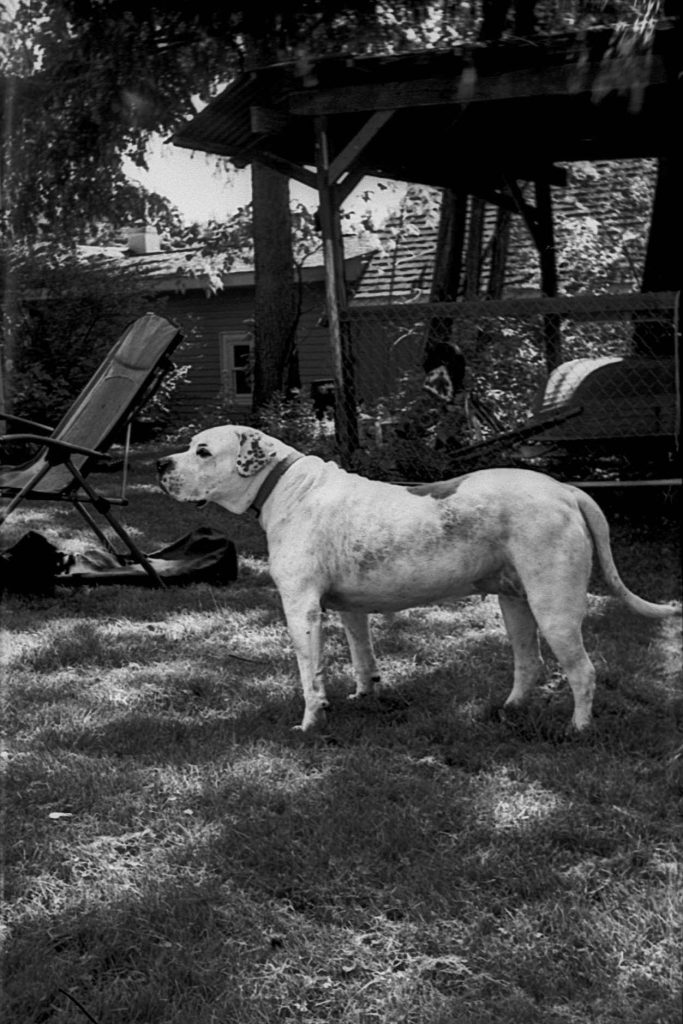
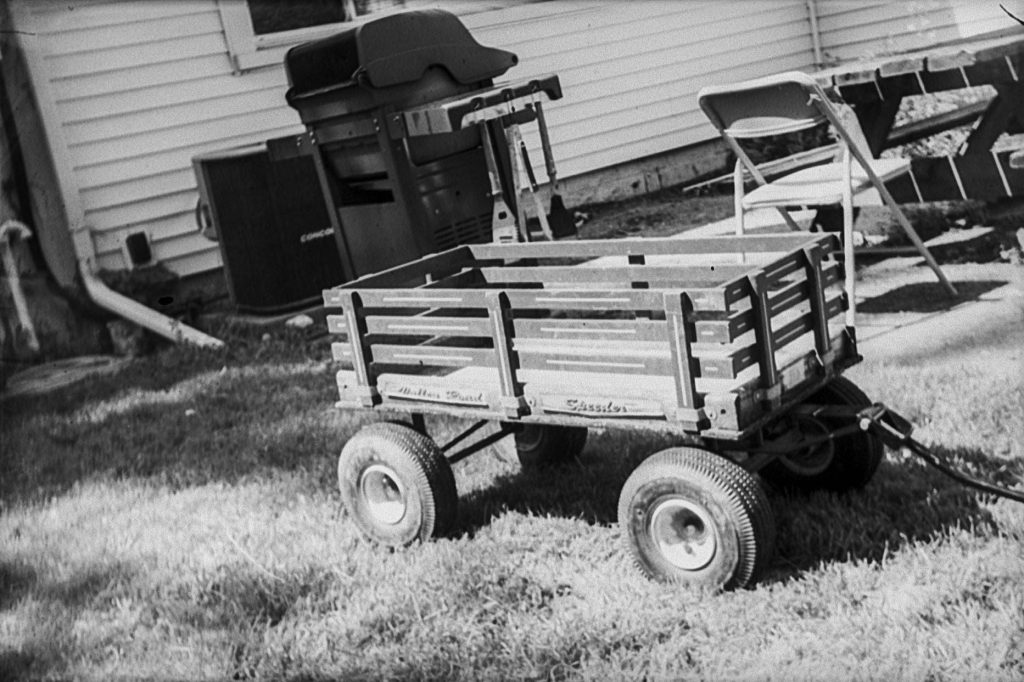
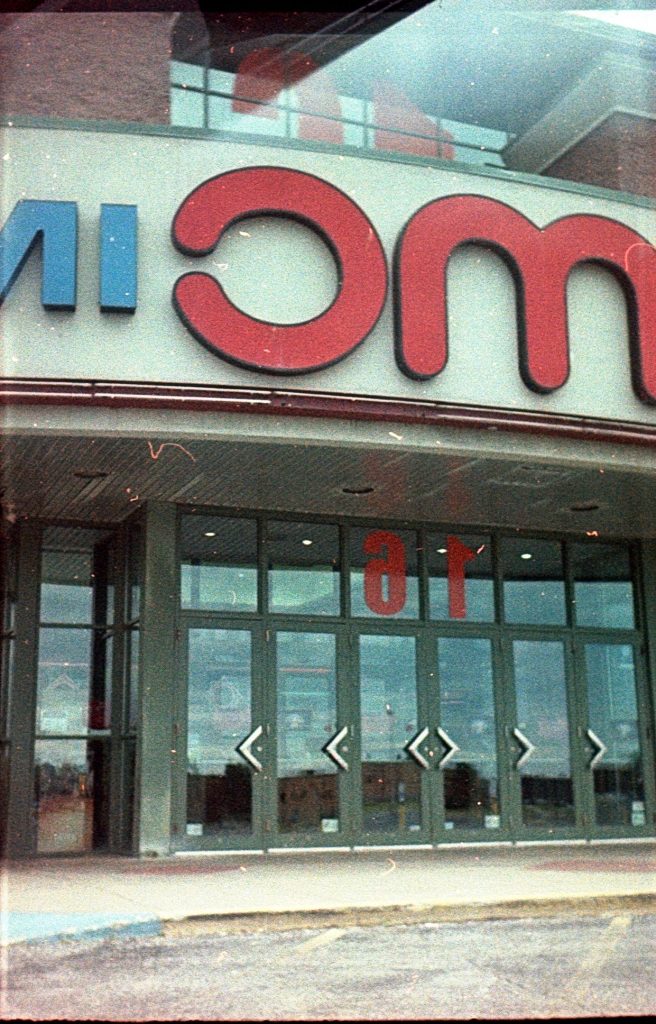
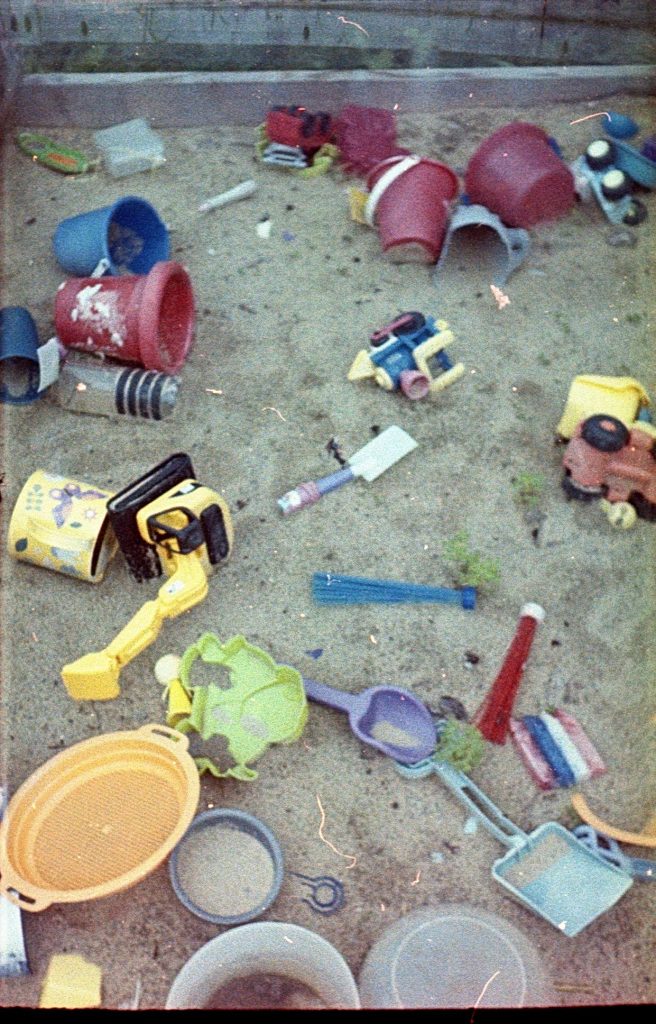
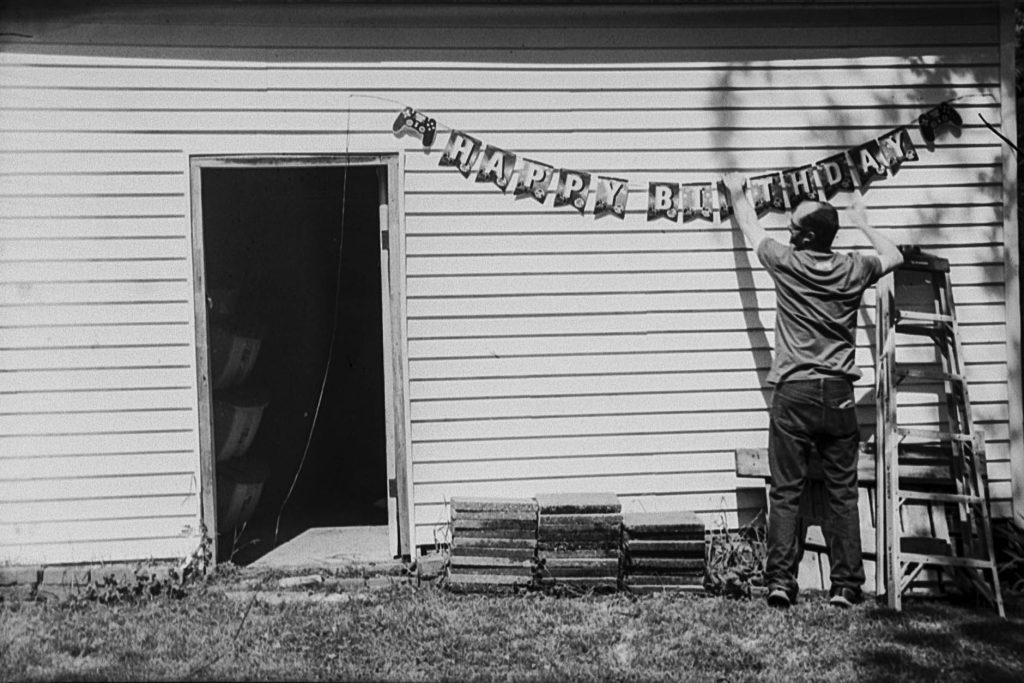
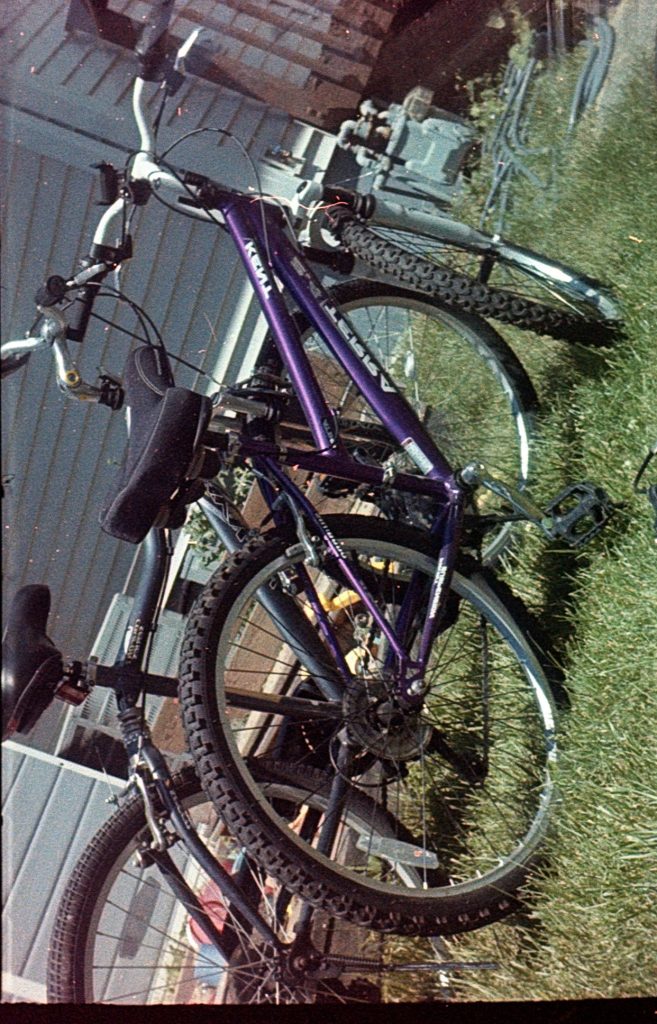
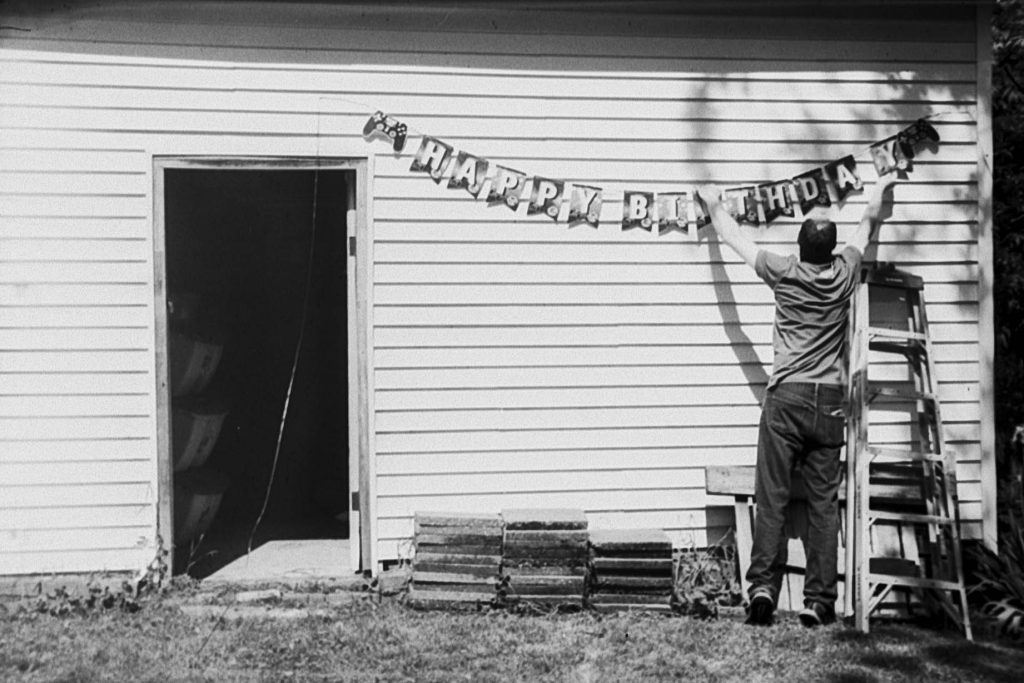
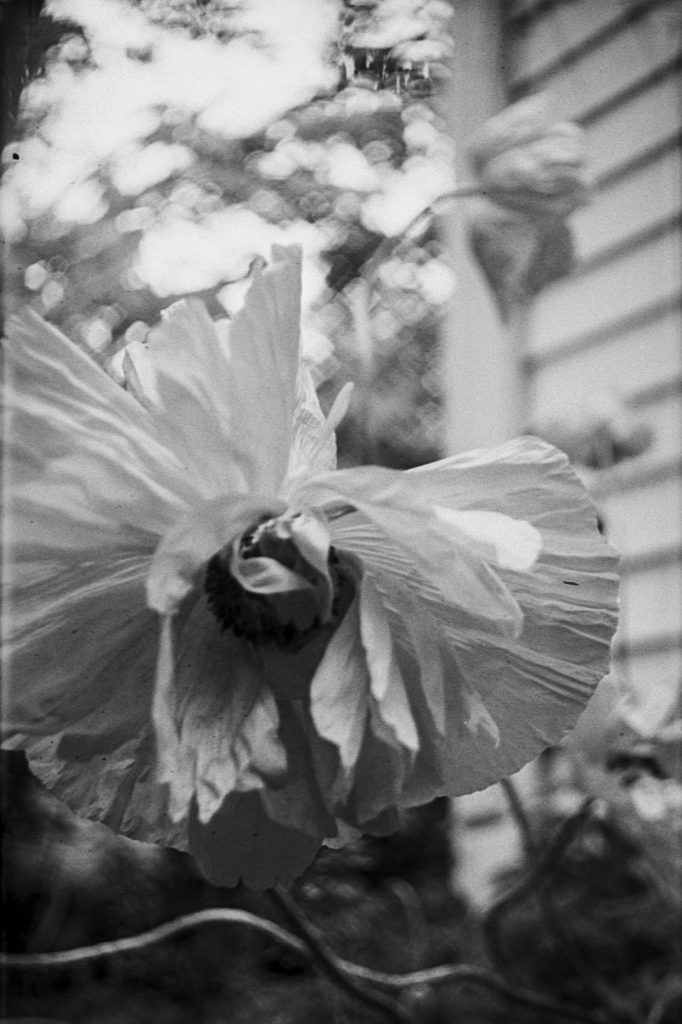
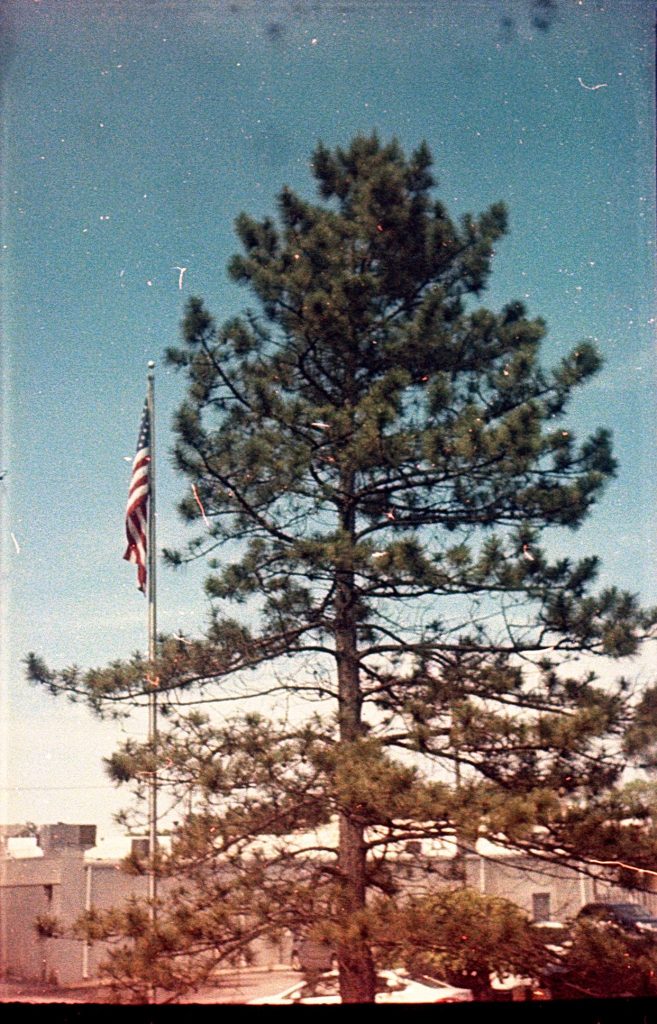
Hi, Mike. What a coincidence, only last week I had mine out just to play with it! I acquired it in the late 1980’s with the meter, magnifying hood and two cassettes. Sadly, now, with lack of use the the slow speeds are erratic = rarely work! but once off the slow speed train from 1/30 onwards all seem to work. The meter no longer works, but clearly was added later as the camera is badged Tessina 35.
Mine fires 11 times, plus a bit, so I’m guessing that when new 12 exposures were indeed possible. The basic “waist level” reflex finder is virtually useless, as you found, and for accurate focusing close up the 8x magnifying hood is indispensible. I noticed that in a few of your scans you forgot to insert the film upside down to correct for the laterally reversed image. I did wonder about this when I enlarged a few negatives if there would be a noticeable difference with having to print through the film base. Using a Nikkor f2.8/50 I can’t say that I noticed any.
These little cameras may be small, but they certainly have a heft in the hand, and are smaller than many a sub-miniature. My serial, 565384, places it earlier than your review sample.
I had one and tried to bond with it. The image quality was not what I would call stellar. Any of my half frame cameras give me better images. It is however a high build quality camera.
My personal experience of 1/2 frame is limited to the Konica AA-35, an overpriced and over-hyped piece of plastic. There are much better 1/2 frame cameras so I am not going to damn all 1/2 frame cameras, despite the limitations of the format.
But getting back to Mike’s review of the Tessina and your observations. Other things being equal, I wouldn’t expect the Tessina to be better than a comparable 1/2 frame camera. The area of the Tessina image is 294 sq.mm, 1/2 frame 432 sq.mm. Given the actual size of the Tessina’s image, 14x21mm, it should more rightly be considered as a sub-miniature camera, which mostly shoot at 14×17, 238 sq.mm. And for modern day use, it uses standard 35mm film, and not the difficult to come by 16mm film in special cassettes, and/or with the correct perforations for the specific camera.
The potential problems for the Tessina, there are two as I see them, result from that mirror that reflects the light path on to the film. Atmospheric conditions may dull the surface or it may not be set true. I’d also add that, IMO, the Tessina is not an easy camera to shoot with. The body is extremely slippy to hold as there is no grip, and this serves to highlight its weight. But as with all sub-miniature photography, film choice and a strict attention to exposure and developing (and developer) are essential, and the best practitioners can indeed produce quality images (limited only by print size) such that up to, say, 6″x4″ prints, results can leave very little to be desired. These results have to be viewed as original prints. Scanning the negative inevitably introduces image degradation in such tiny images.
Today’s prices reflect the Tessina’s collector status rather than its use as a photographic tool. Fortunately, Lomography are still supplying 110 film so for anyone wishing to shoot sub-min, what better than with a quality tiny 110 camera such as the Pentax 110 or the lovely Rollei A110?
An informative review, Mike. I vaguely remember magazine adverts from 50 years ago that showed the Tessina on a wrist strap, worn like a watch, and thus positioned for easy aiming with the WLF, and steady shooting since the photographer’s body was the tripod. Did you run across any such images in your research?
My father bought a Tessina in the 1960s. He didn’t use it much, so I appropriated it… I was a teen at the time. It’s a cute little camera and I’ve taken 100s of picture with it. I used to reload the little cassettes from bulk 35mm film and develop it in the darkroom in the basement (my father and I were serious shutterbugs – I still am). I was fortunate he had bought all the accessories too – wrist strap, prism view finder to clip on, bulk film loader, lots of spools and cassettes and everything else. I haven’t shot with it lately, but it’s in my collection. I can’t say it took the sharpest pictures, but it was fun to use and I could slip it in my purse and always have it with me.